June 19, 2022
Martha O'Kennon
Well, our beloved La Nin~a weather pattern decided to let the local weather duke it out with itself. By midweek we had temperatures in the 90's F. But on Friday we breathed a sigh of relief and today, Saturday, is a beautiful day - during the night we got down to the 50's F and I'm not looking at my thermometer again for the time being.
Those old planter boxes need to be planted with some new citizens. But the pinks that have survived for a couple of years in one of them rebloomed this year for just a moment.
If you look carefully into picture 1, you will see what delighted me. Next, the one survivor of the three Climbing Fumitory vines, which wrapped itself about a long pole and is finally climbing the pole, getting ready for its fall blooming (I hope). Third, the "Purple Foxglove", which emerged in the messy space next to the water outlet, is blooming again, and still white, not the least bit purple.
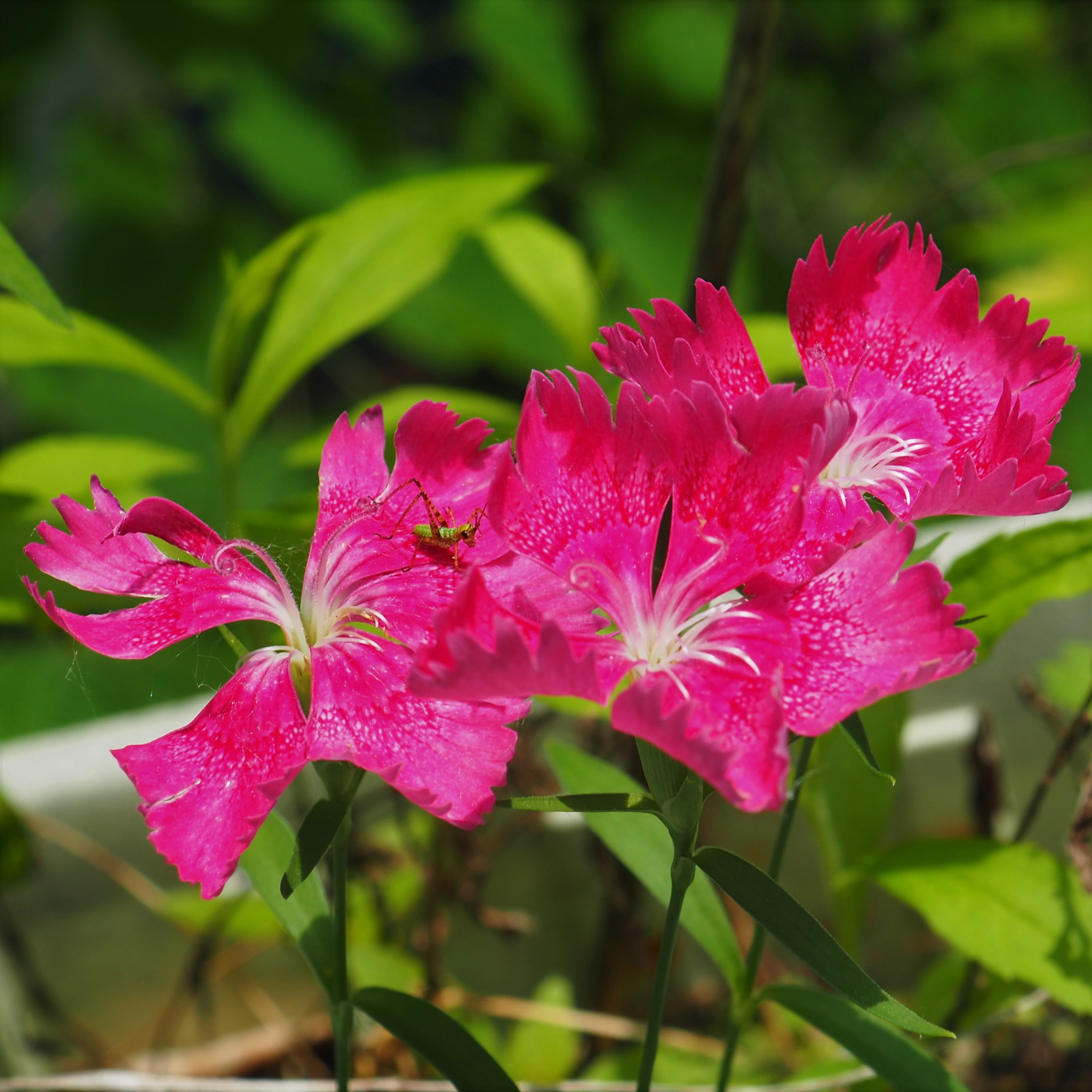


Just when I think I have a handle on the Ants in the yard, I find out that identifying them is a good deal harder than I thought. This first one is a Nearctic Ant, going by the reddish thorax. The second and third ones, carrying prey items, are also most likely Nearctic Ants.
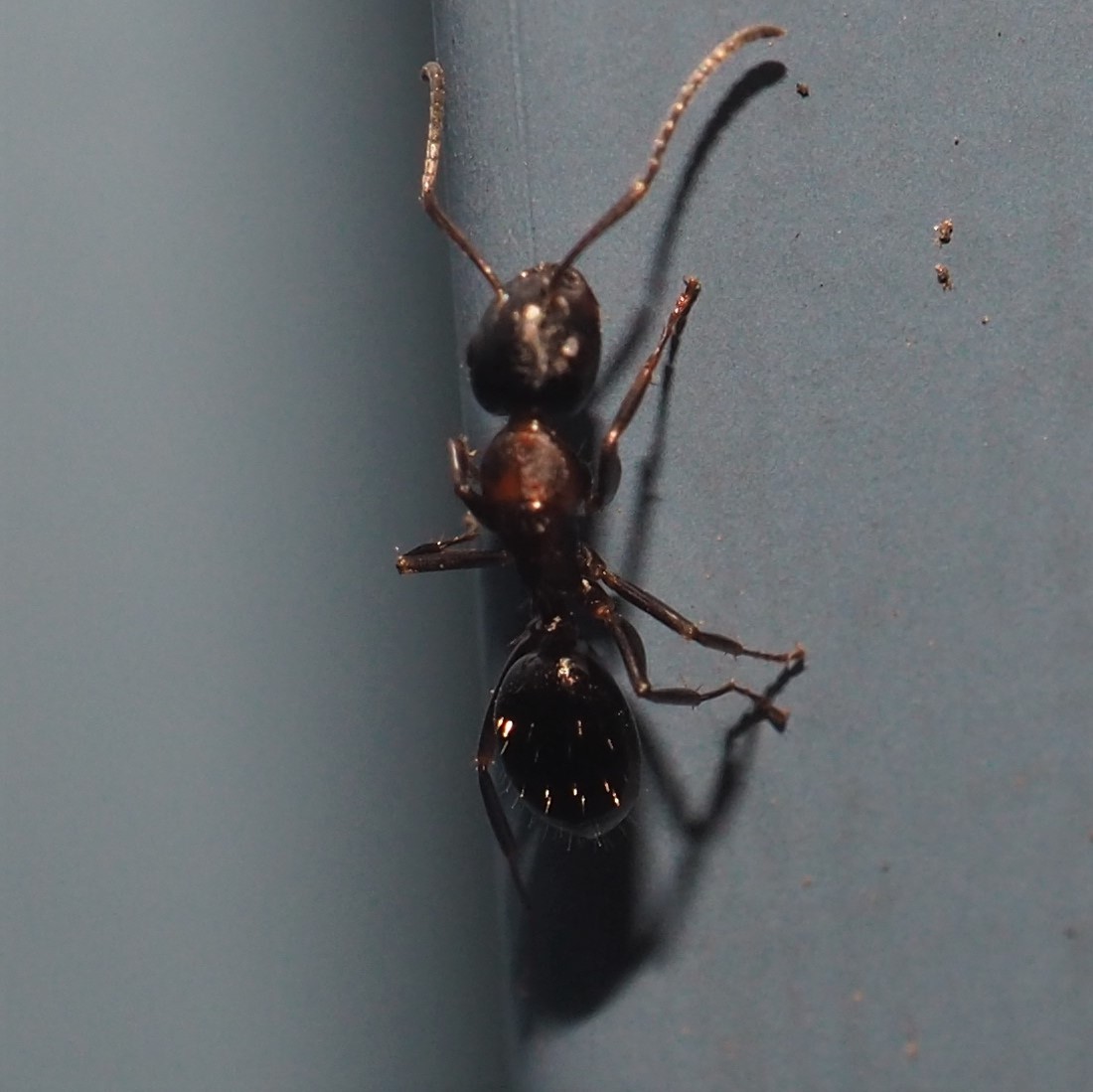
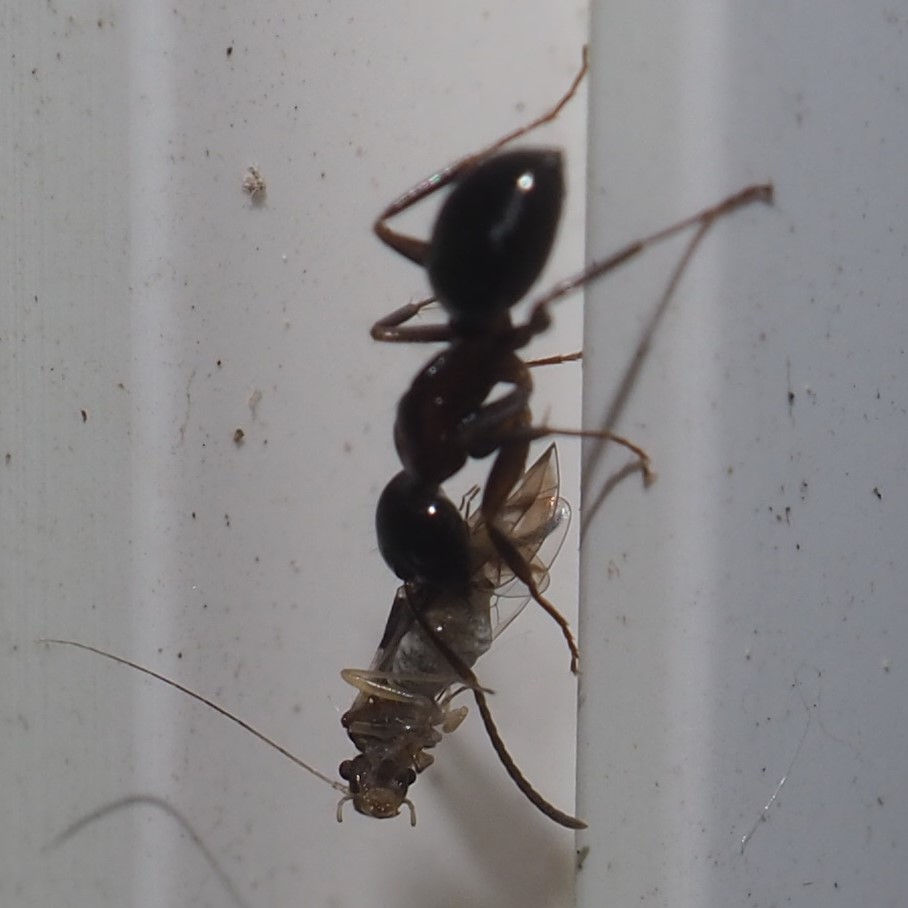
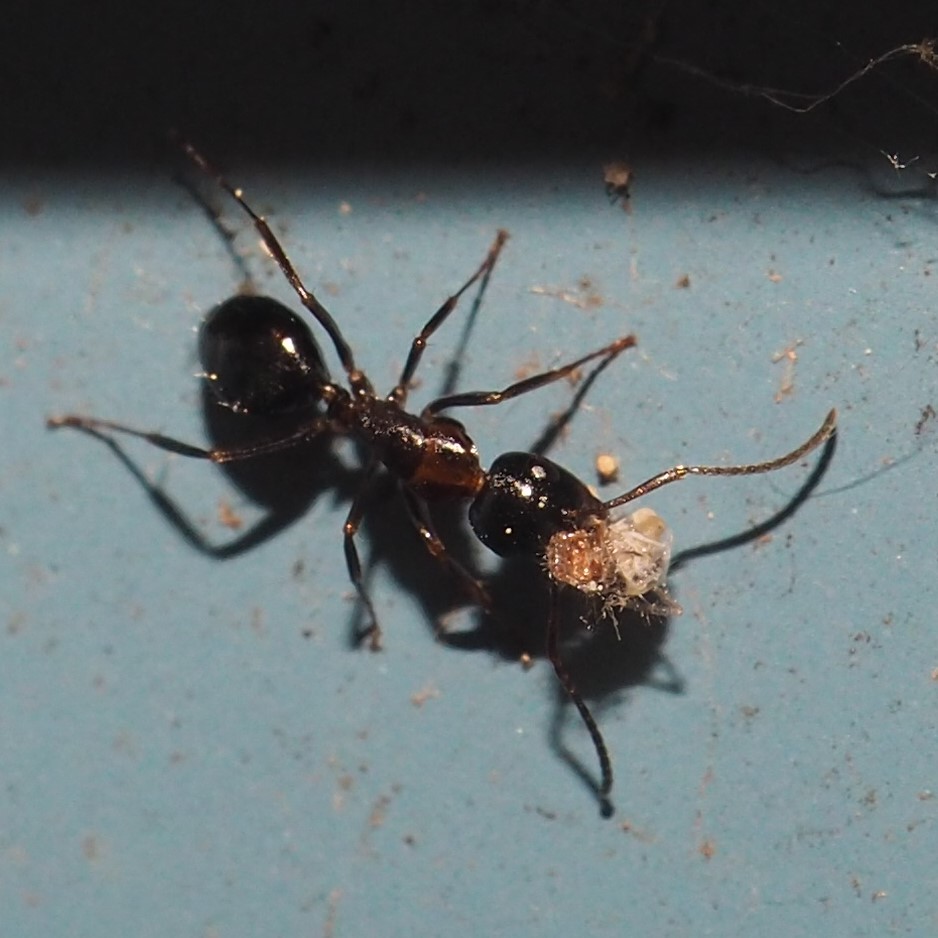
But when I go out to see how the Keeled Treehoppers are coming along with their little Mother and Eggs scenario, I always expect to see an Eastern Black Carpenter Ant bothering the Mother to hurry along her eggs' hatching, but this week the Ant was identified as either a Fusca-group Field Ant OR Wood, Mound, and Field Ant. Third is a new picture of the Bent-spined Acorn Ant, racing around on the garbage can lid.
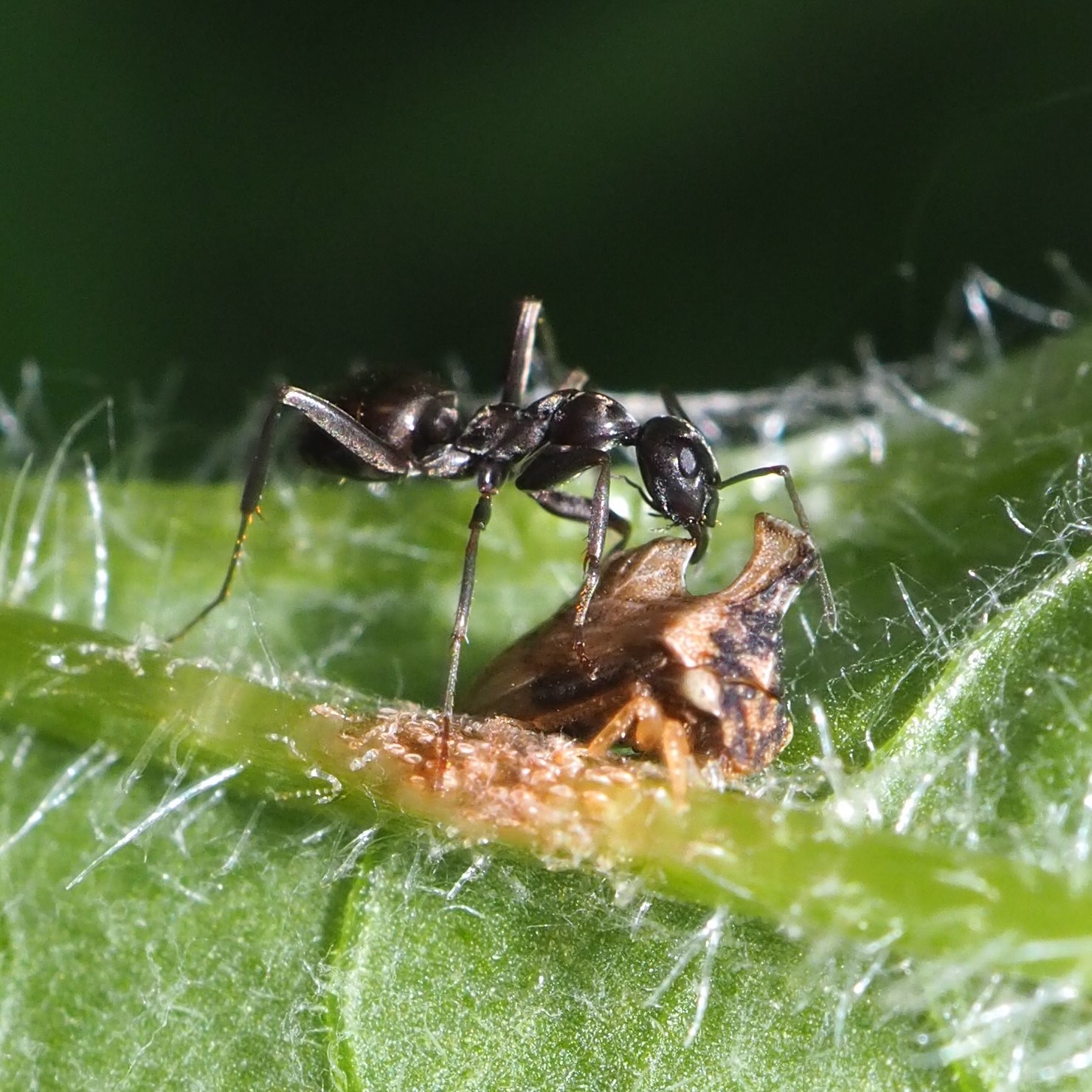

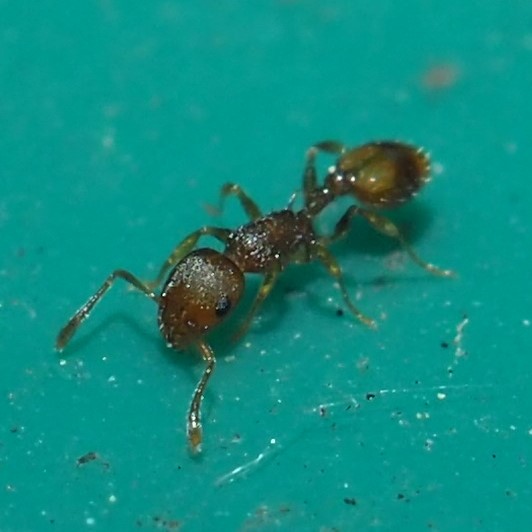
Not much in the way of Bees this week. But Beetles were plentiful. Here are a Lightning Beetle; Lechriops oculata; and a mystery Beetle.
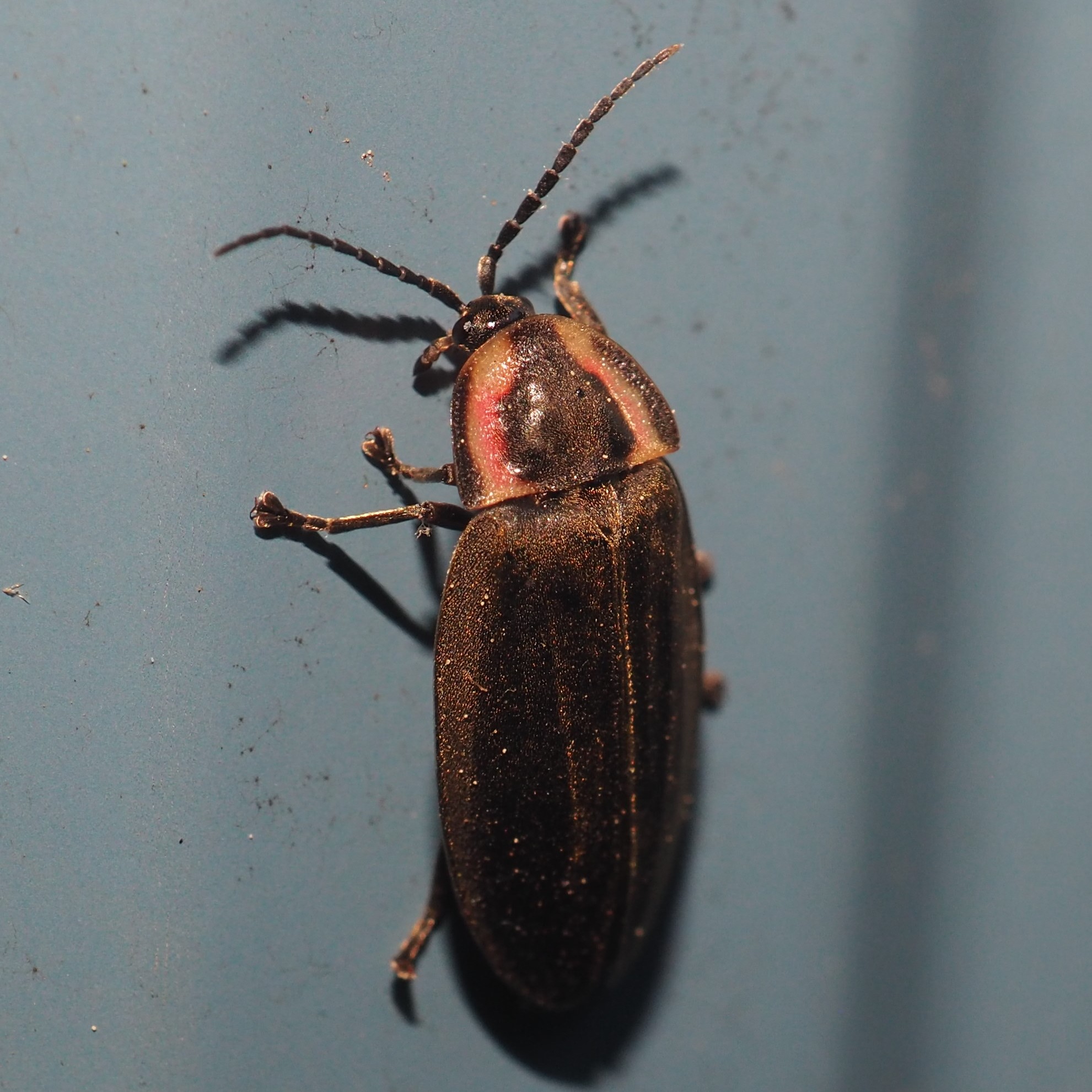
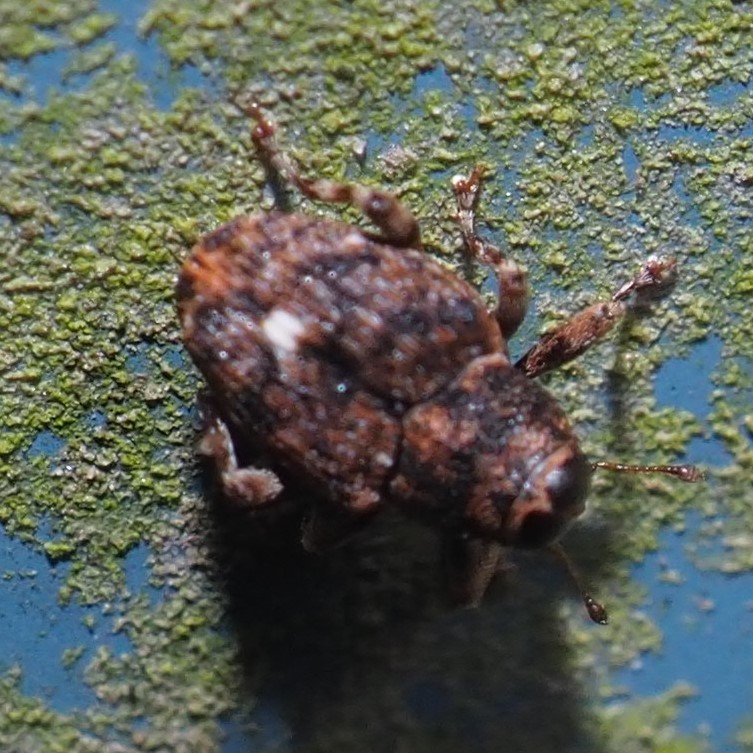
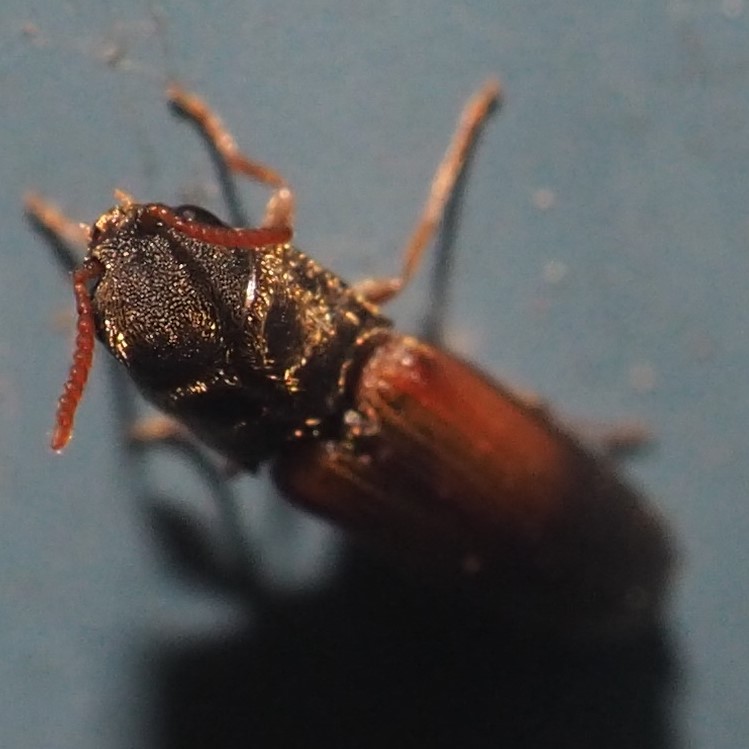
Here we see Phyllotreta ochripes, the enemy of Garlic Mustard. Next, this red-spotted Beetle is a member of genus Mordellistena, one of the Tumbling Flower Beetles. And the Green Weevil corpse is either the Pale Green Weevil or the Immigrant Green Weevil. It is probably the Pale Green, since it isn't long since we saw a live one.
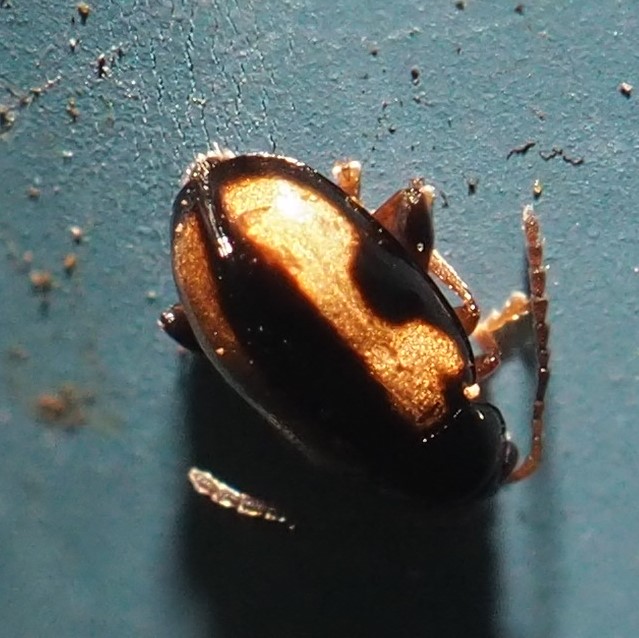
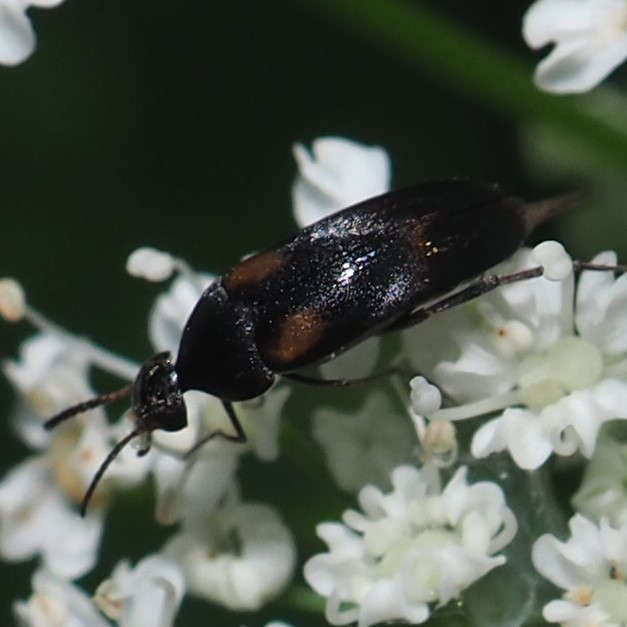

The Bugs are doing all right out back. Here is the Four-lined Plant Bug, which is a voracious eater of delicate plants. Next is the Green Stink Bug. And last, a female Keeled Treehopper, Entylia carinata, with her eggs. You saw in the section on Ants how eager the Ants are to have nymphs to nurse. If you're interested in the life cycle of E. carinata, here is a website I made in 2020 about the development of a colony. I've had to wait two years to get another big Thistle Plant to grow in a spot where it's convenient for me to drag a folding chair to get pictures of the colony.

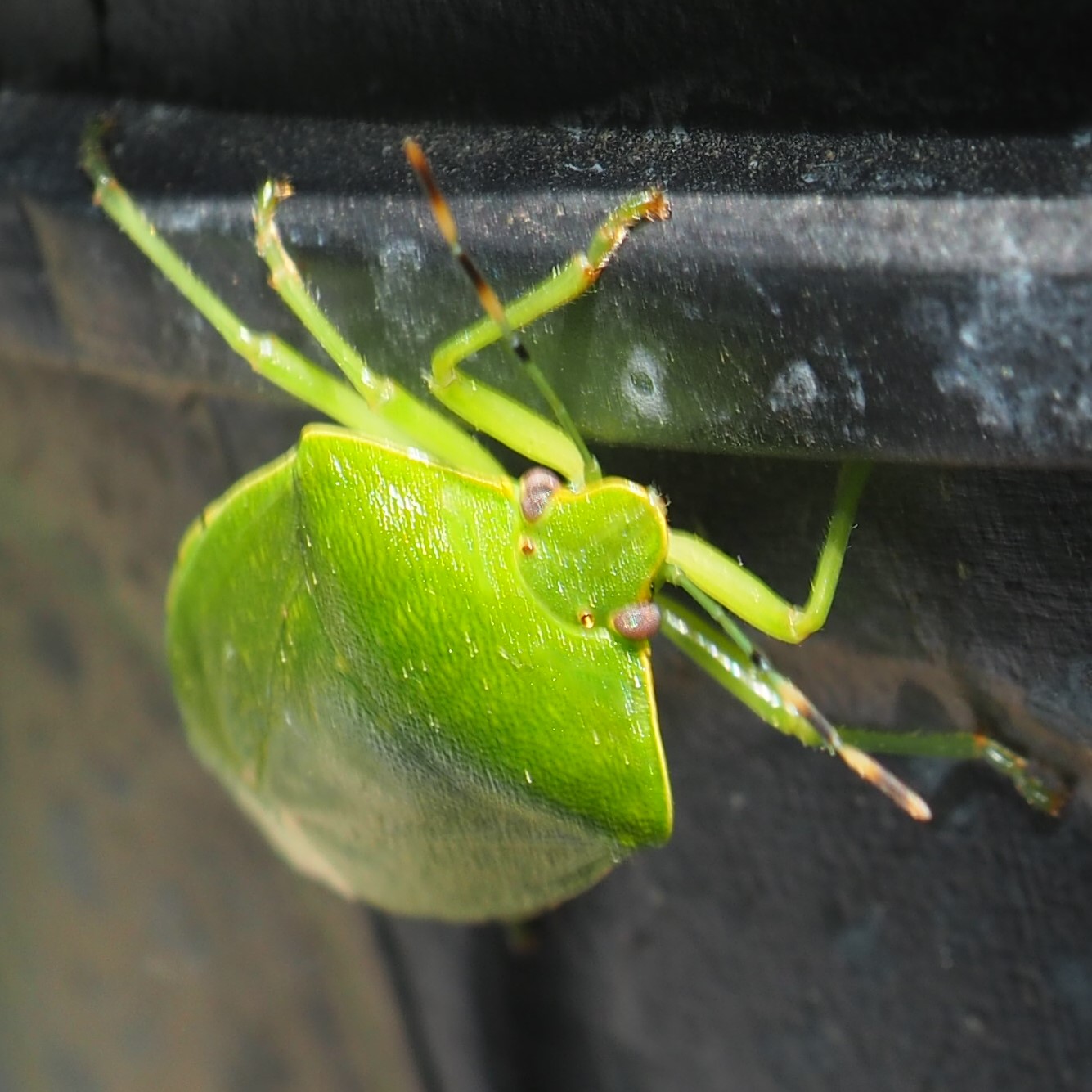

I was just about to say I didn't see any Assassin Bugs this week, but then when I went out to see what's out there today (Saturday) this little thing that looks like some kind of a Damsel Bug, and those are as nasty as Assassins! Then, guess what? I finally spotted an adult Assassin Bug (Zelus luridus)!
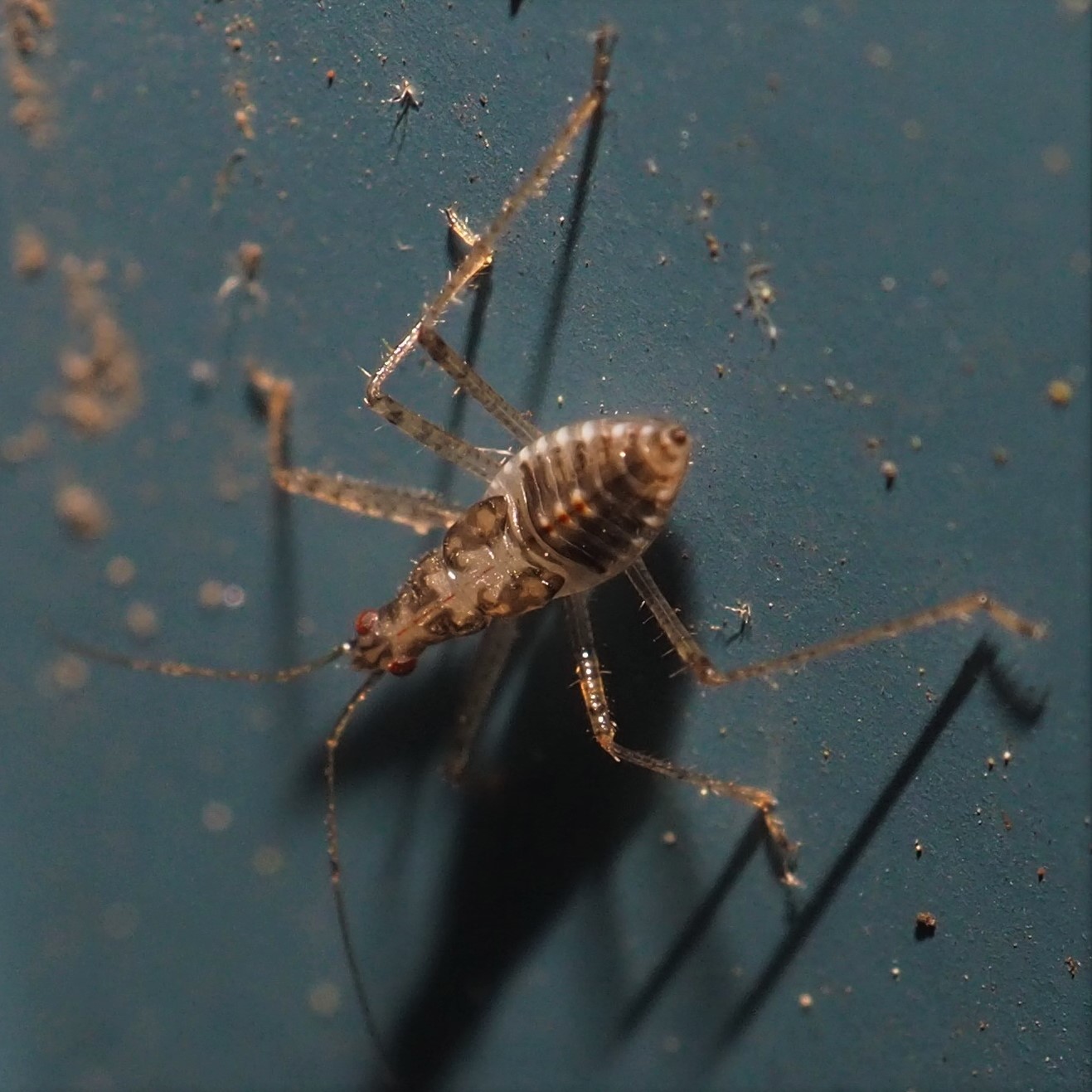
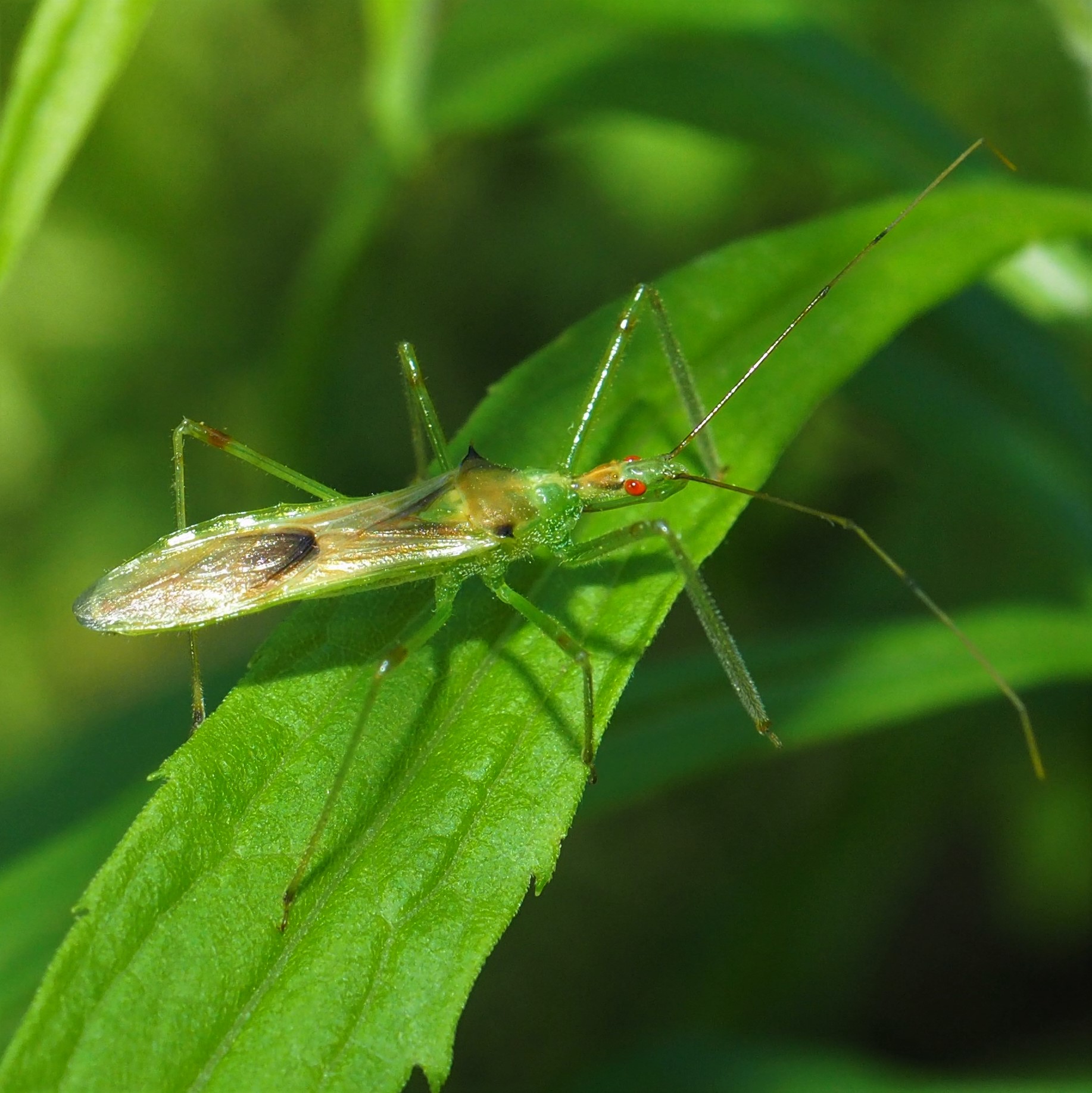
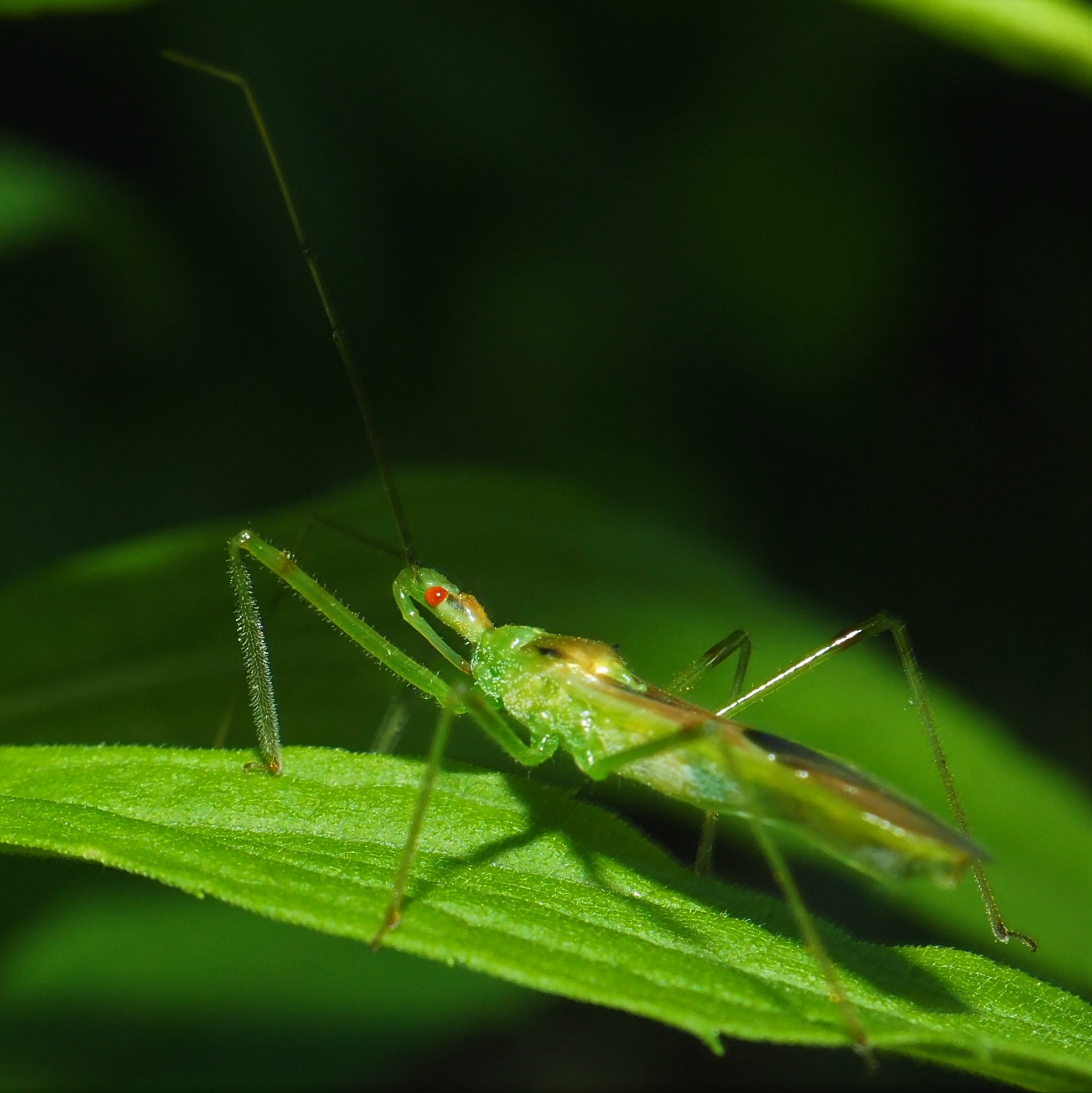
I was also about to say I hadn't seen much in the way of Barklice this week, especially after that explosion of Polypsocus corruptus last week. But I saw a Trichadenotecnum alexanderae on the South Wall and then again on the East Wall. Third is an adult Graphopsocus cruciatus.
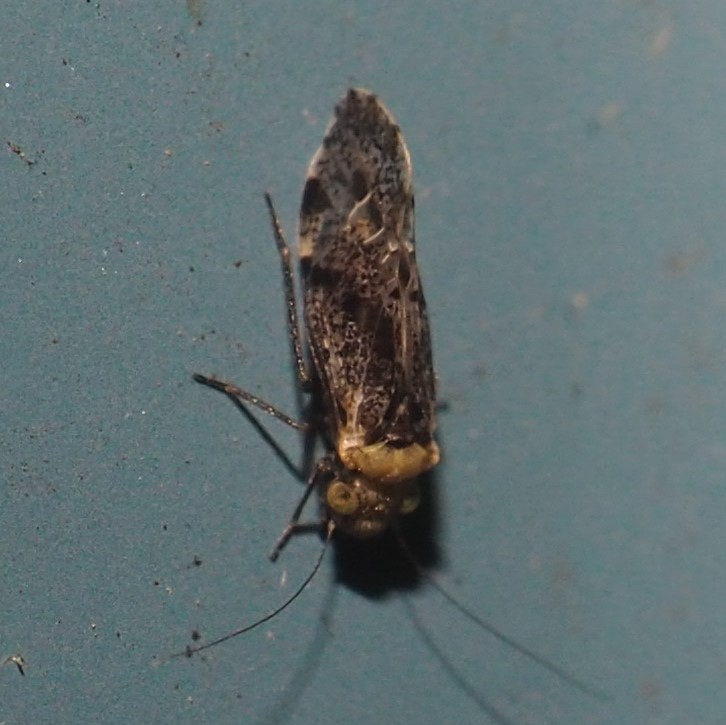
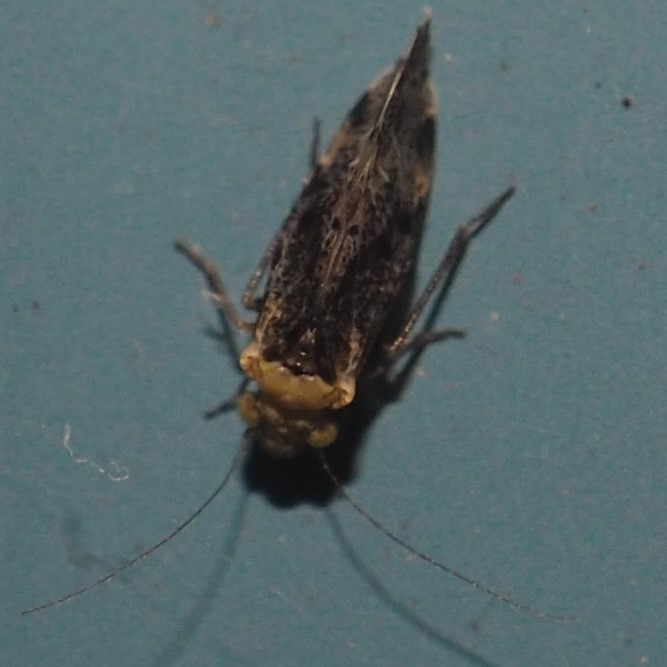
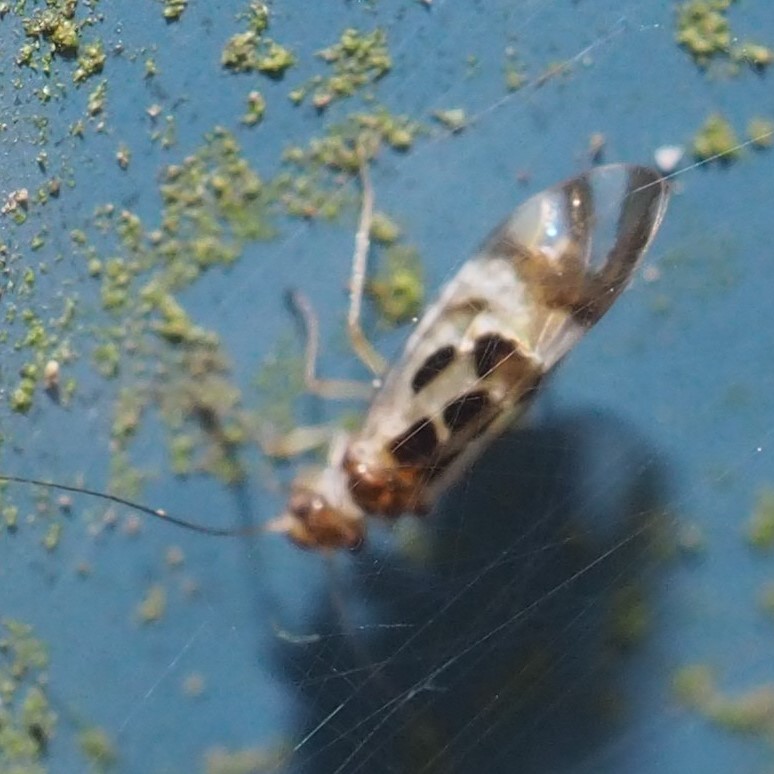
Here is a little Barklouse, top-on. I can't think what it must be. Second is a group of four P. corruptus. There were several of these little groups this week. Third is a big group of G. cruciatus eggs!
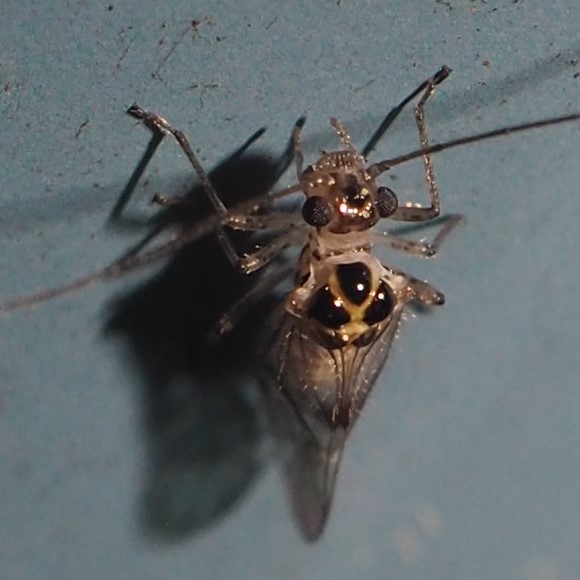
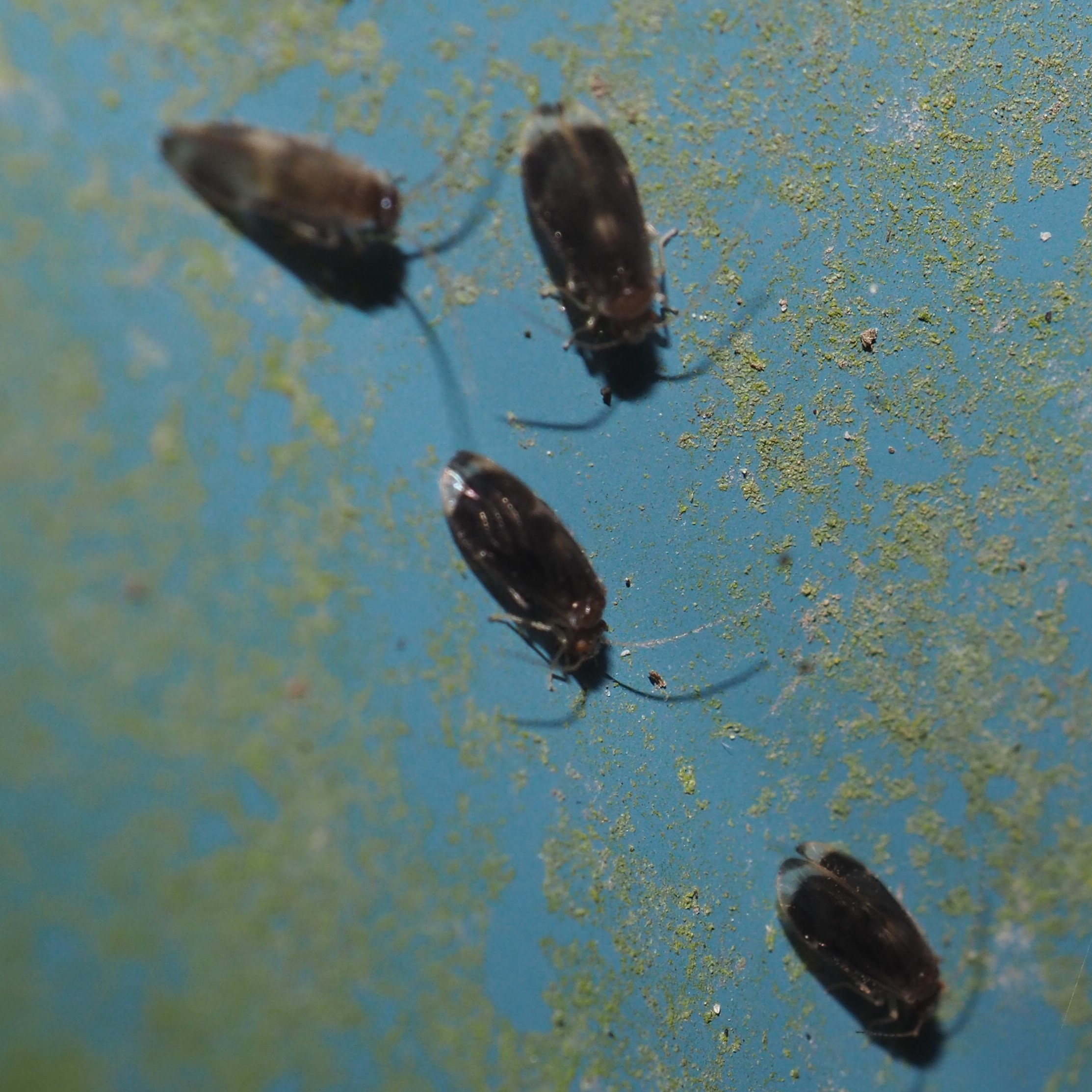
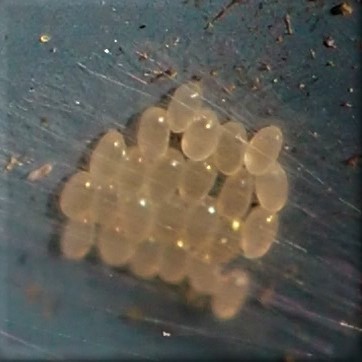
We're into the those amazing Flies. First is my favorite Crane Fly, Limonia annulata, which looks as if someone block-printed its wings with a simple wood block. Next is one of the most common Hover Flies, genus Toxomerus. Third is one of those tiny sparkling iridescent flies, mostly called simply "Long-legged Flies".
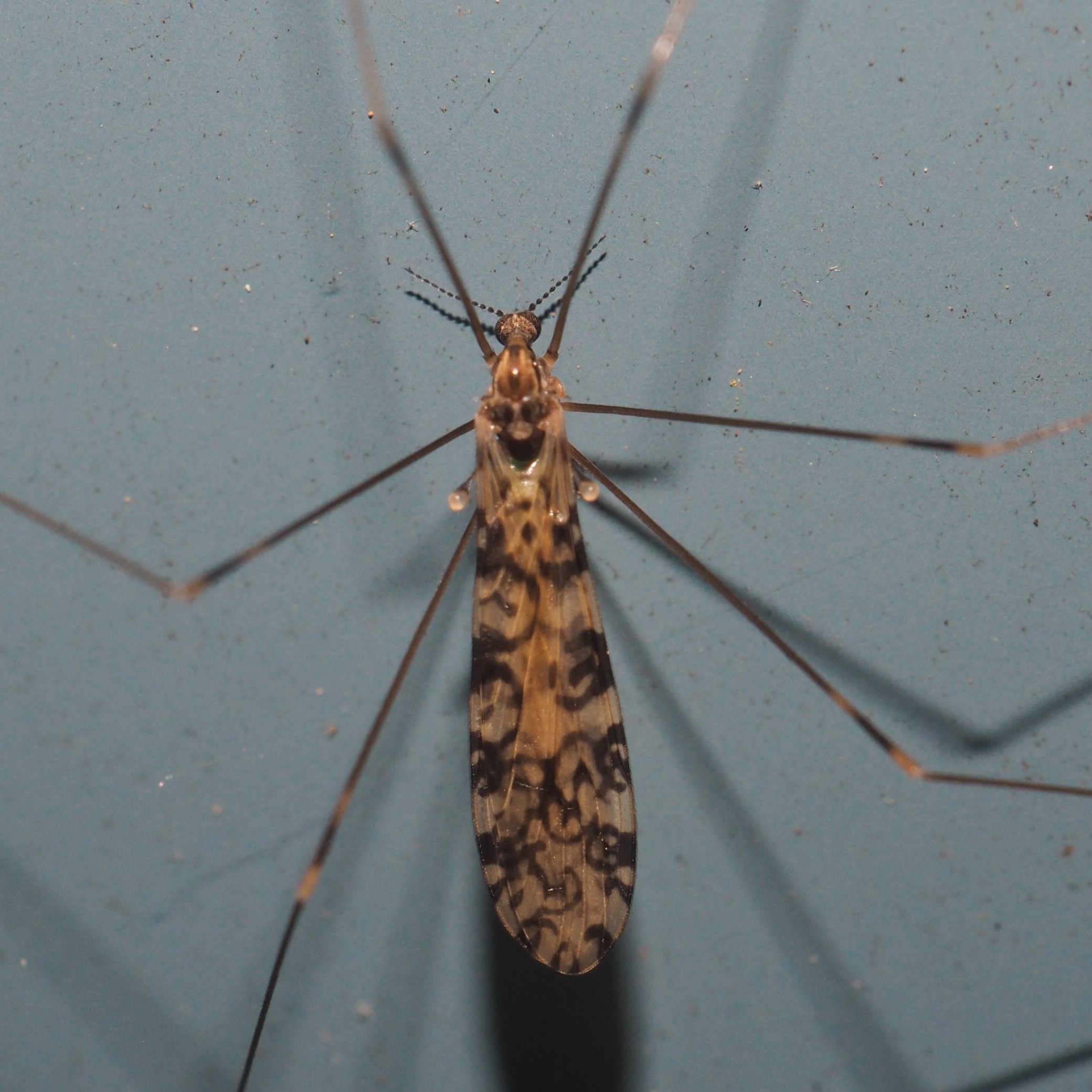

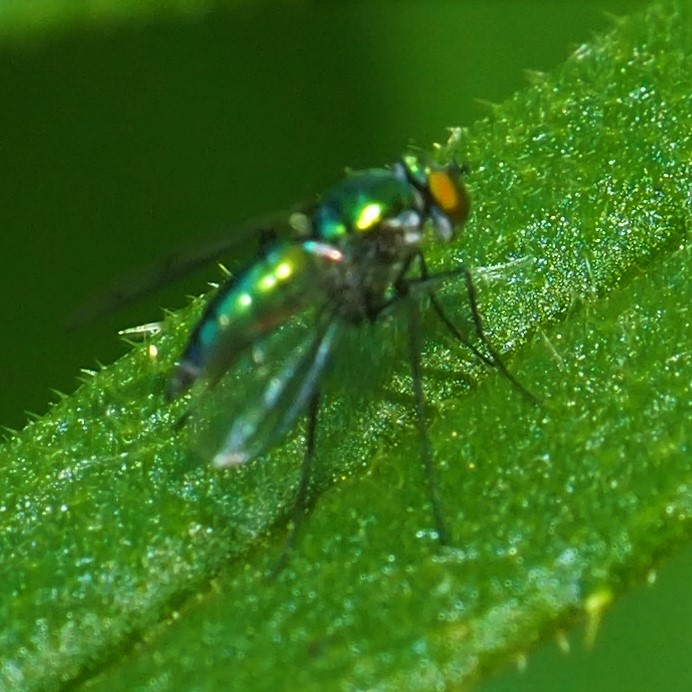
Here is a Midge (maybe a Mosquito) - besides its other Dipteran (Fly-like) attributes, it has had the most amazing coif done to its antennae. :-) Next is the by now well-known Bathroom Moth Fly. Third is a mystery Fly.
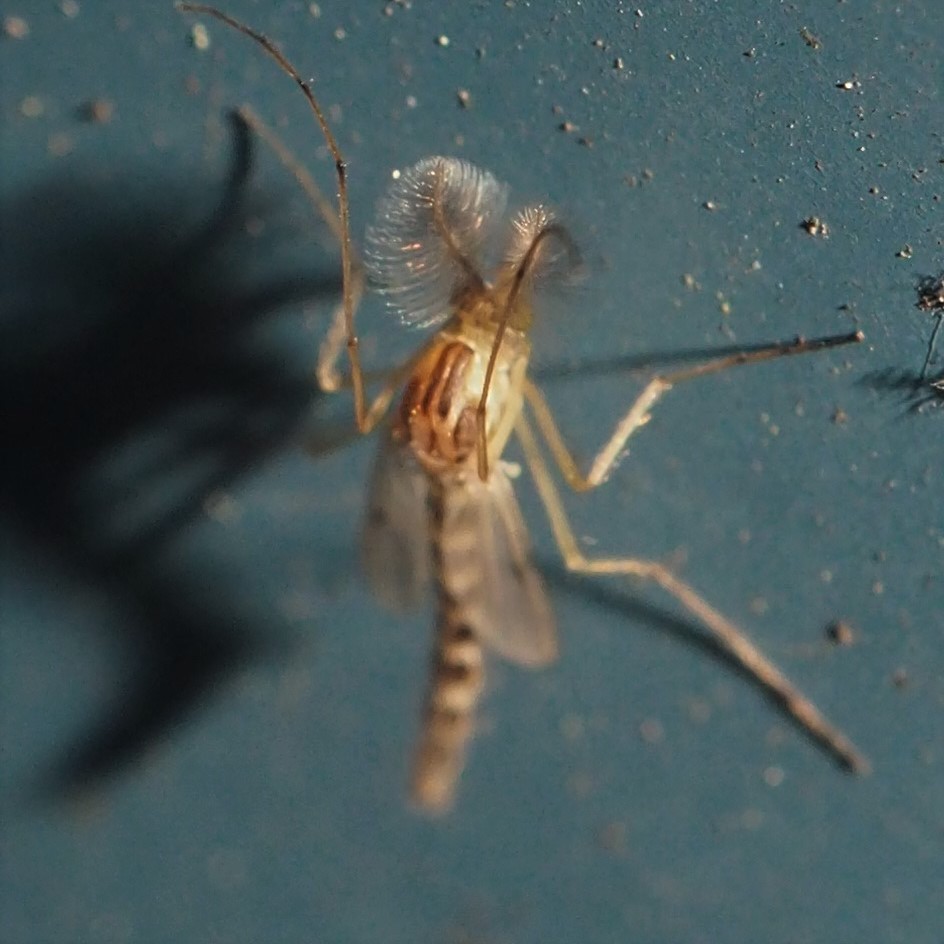
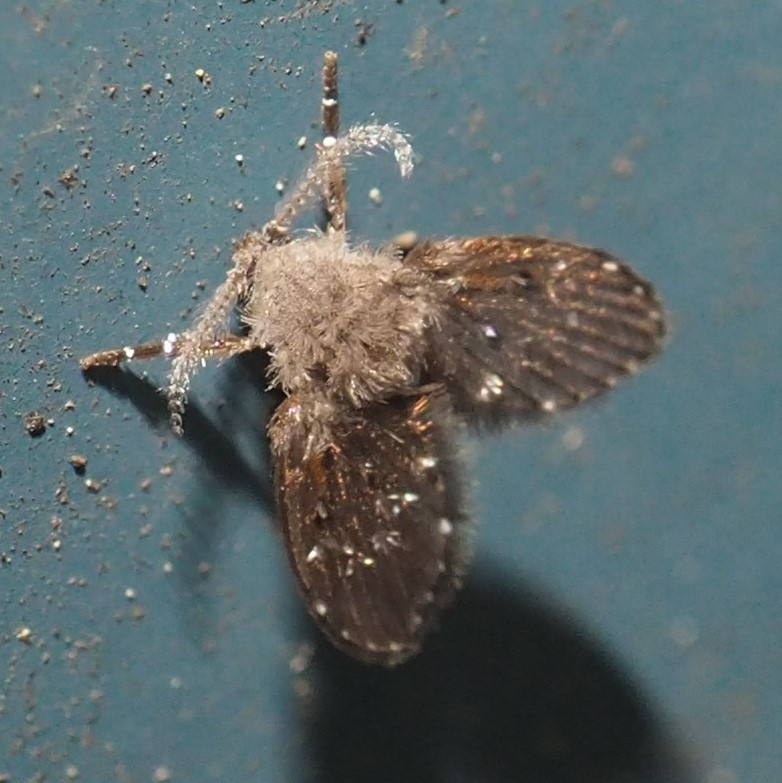
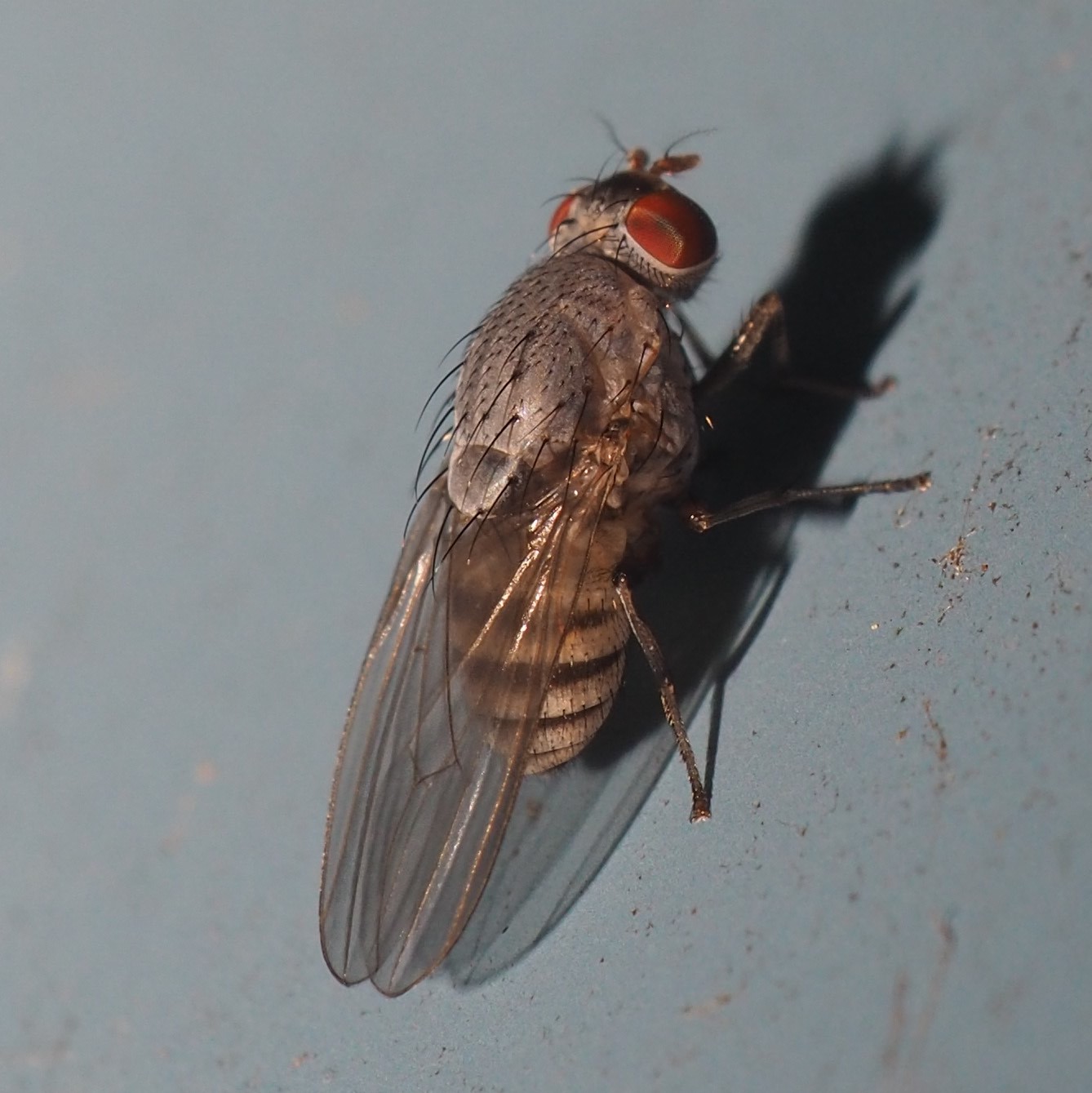
This one looks like the Deer Fly that bit me this last week, but may have a different name. It has the tail-end spikes of a Tachinid Fly. The next two show a lovely but very tiny Vinegar Fly.
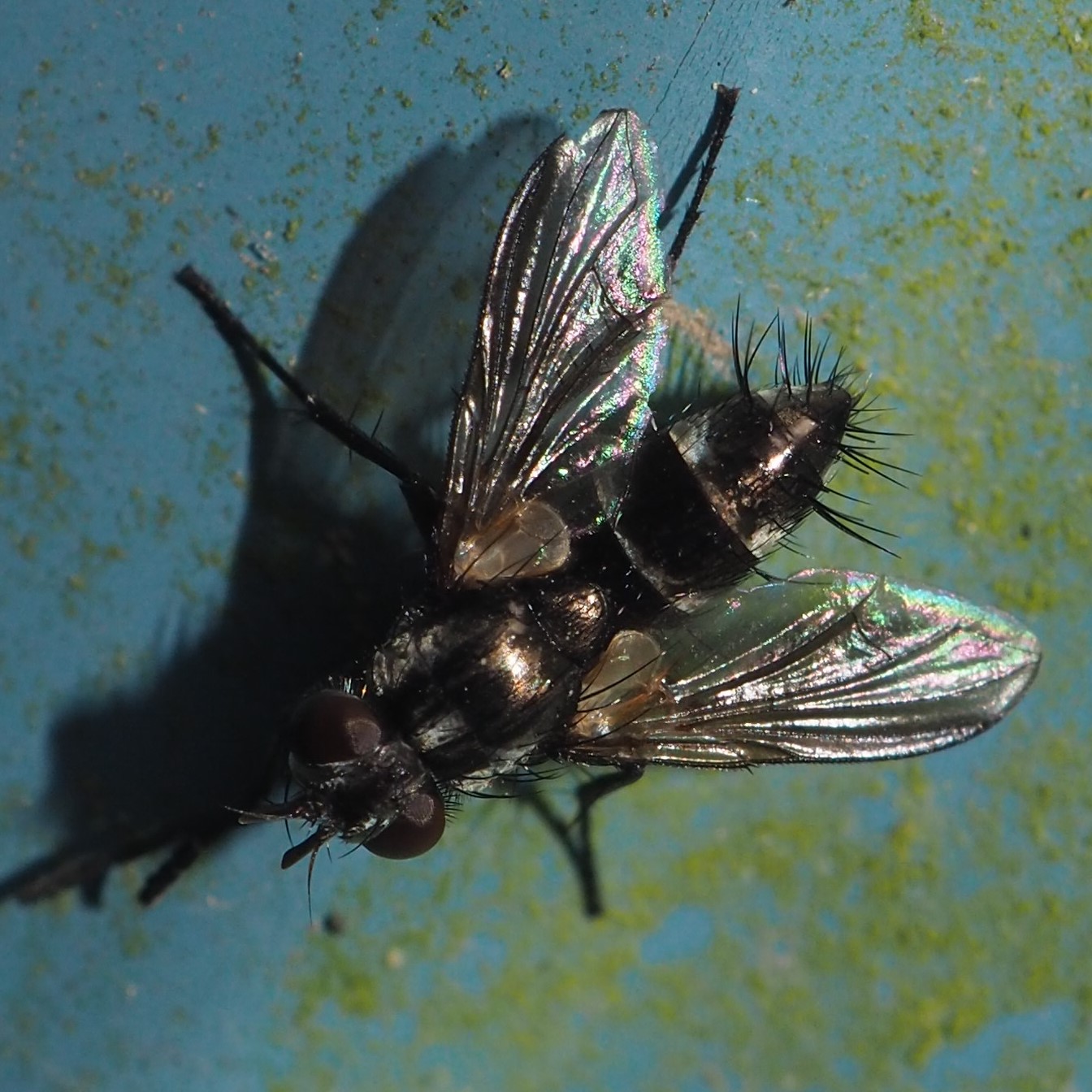
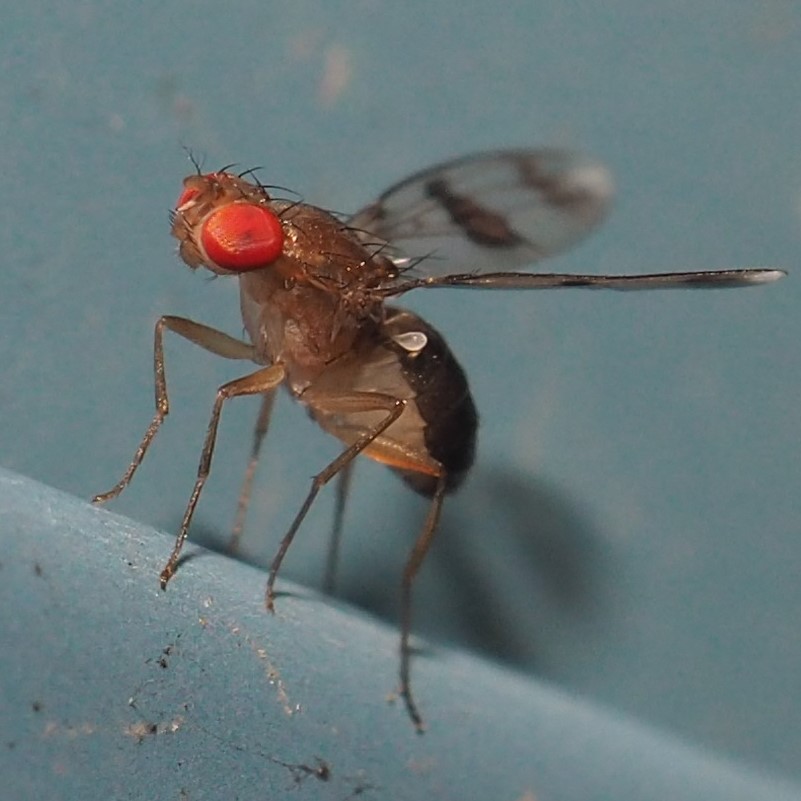

This first one has such lovely iridescence on its thorax. I BELIEVE this next fellow is a Quadrate Snipe Fly, or Woodlouse Fly; and that the NEXT one is the other sex of the same species.
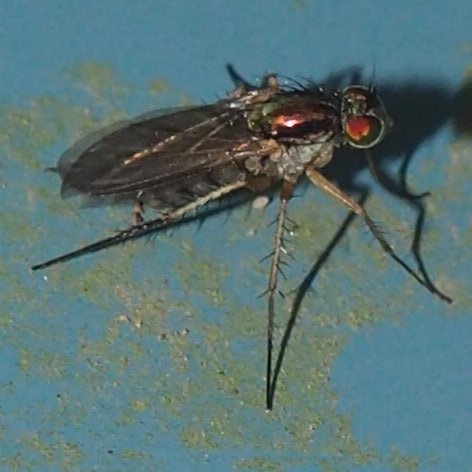
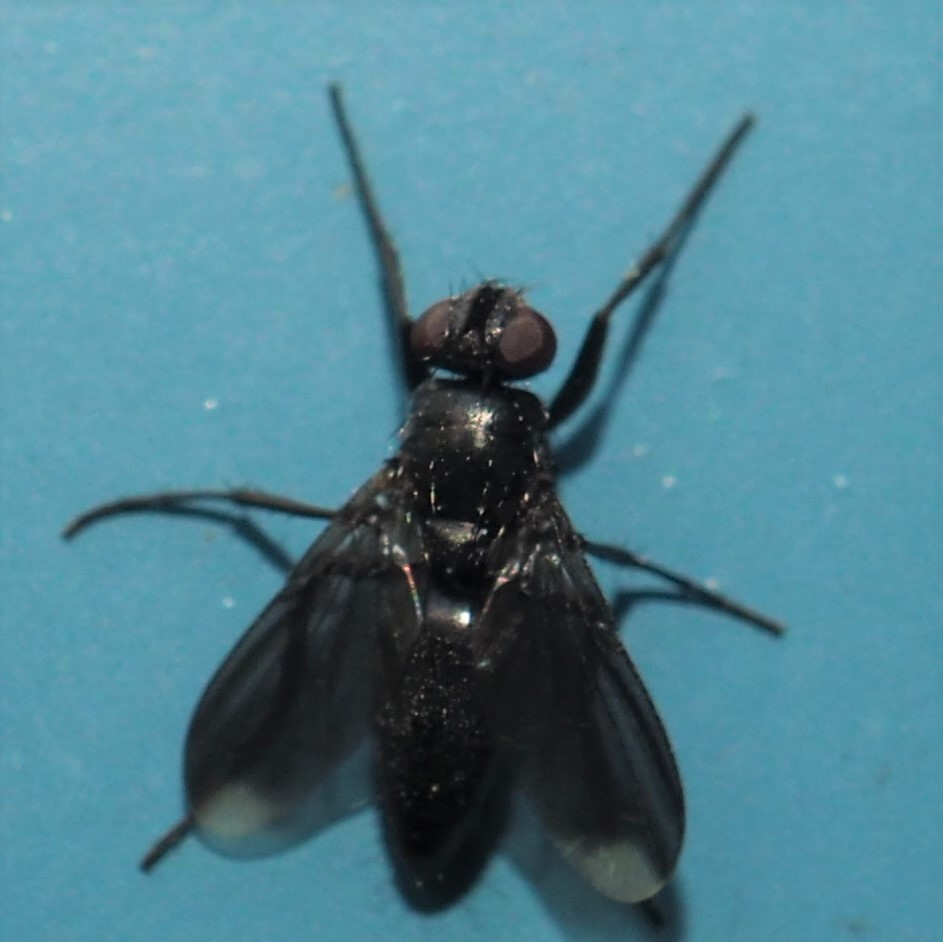
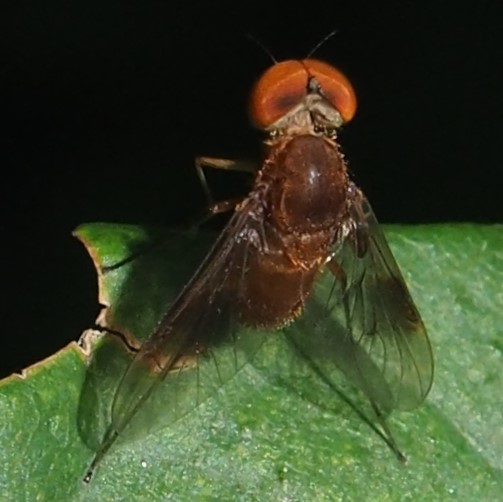
Here is a really tiny Fly. Second is another tiny fly, but bigger than the first one. And third is a very small white-winged Fly.
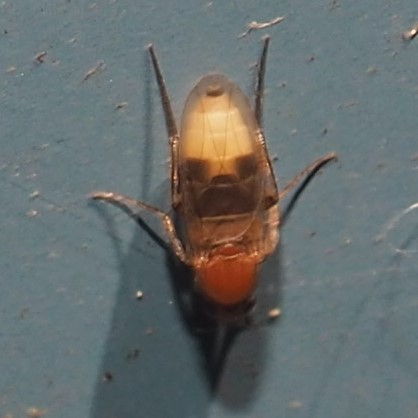

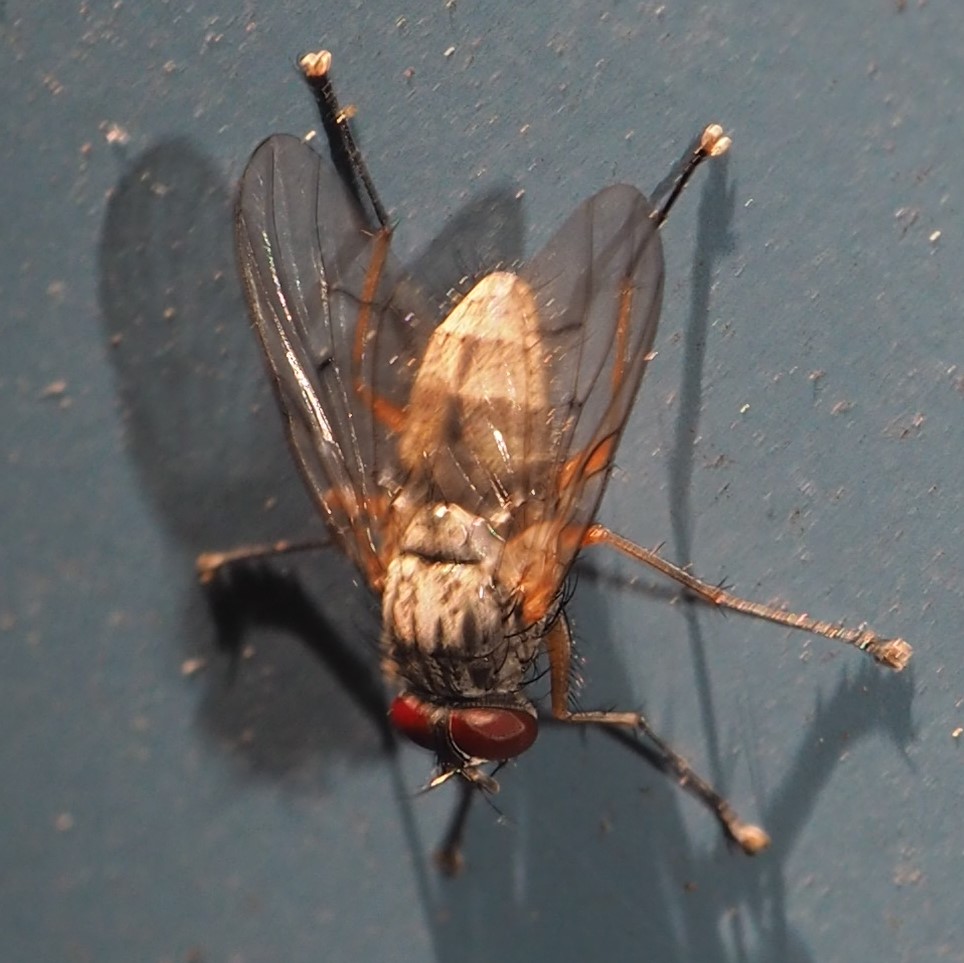
This tiny Moth is probably the Diamondback Moth, Plutella xylostella. The next one is the caterpillar of the Gypsy/Spongy Moth. Third is a tiny Plume Moth.

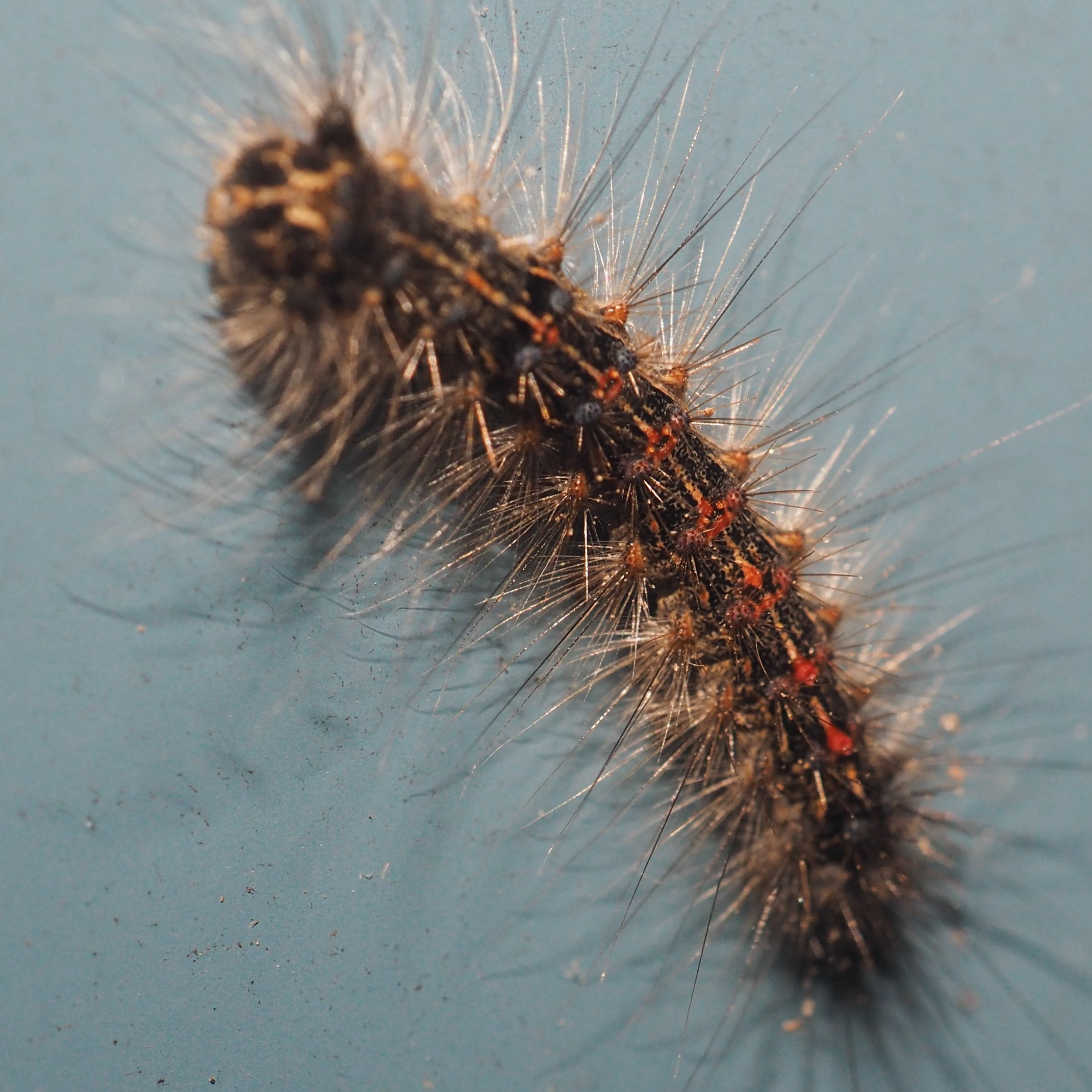
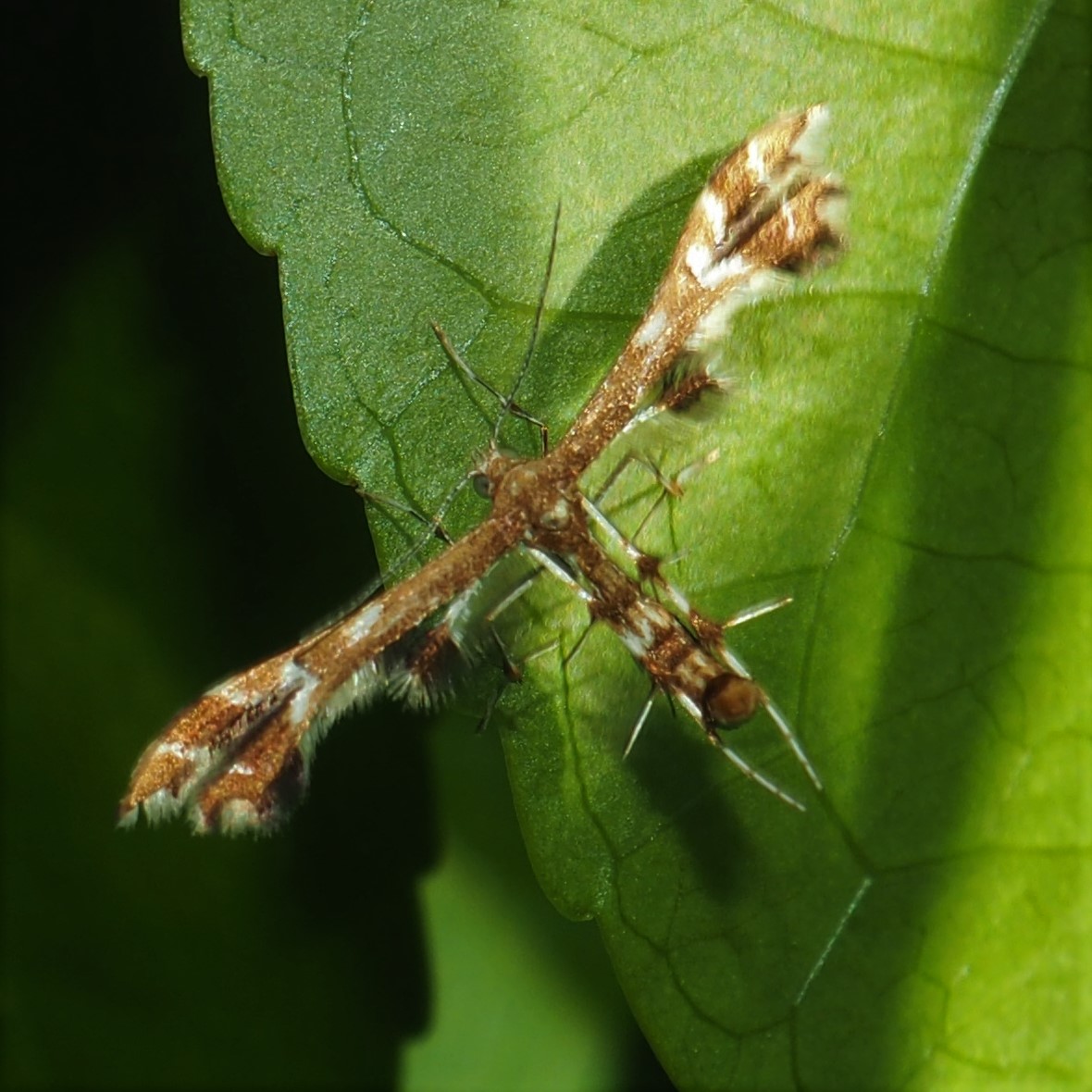
Let's go off for our Flower Walk now. First, let's go back to that picture of the shocking-pink Pinks. I mentioned that if you looked very closely to that picture, you would see something interesting. Did you see it? First is the original picture, and second is the decorative young nymph of a Scudderian Bush Katydid. Doesn't it look like a child's Rocking Pony?

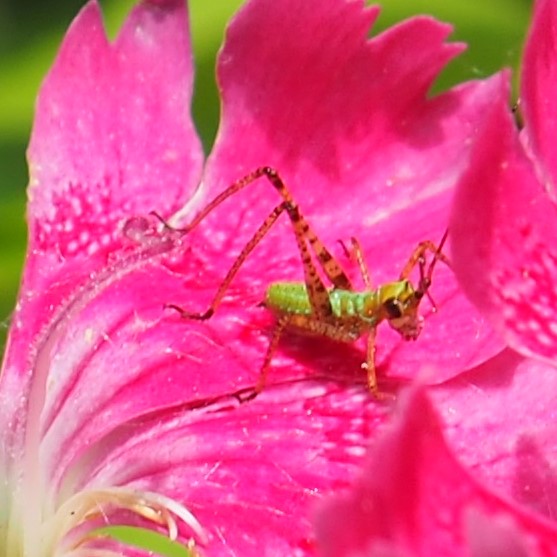
The Honeysuckle is blooming in the Northwest yard. The Mullein seems to be fading . We've already seen the Tumbling Flower Beetle, but this time just admire the Goutweed.

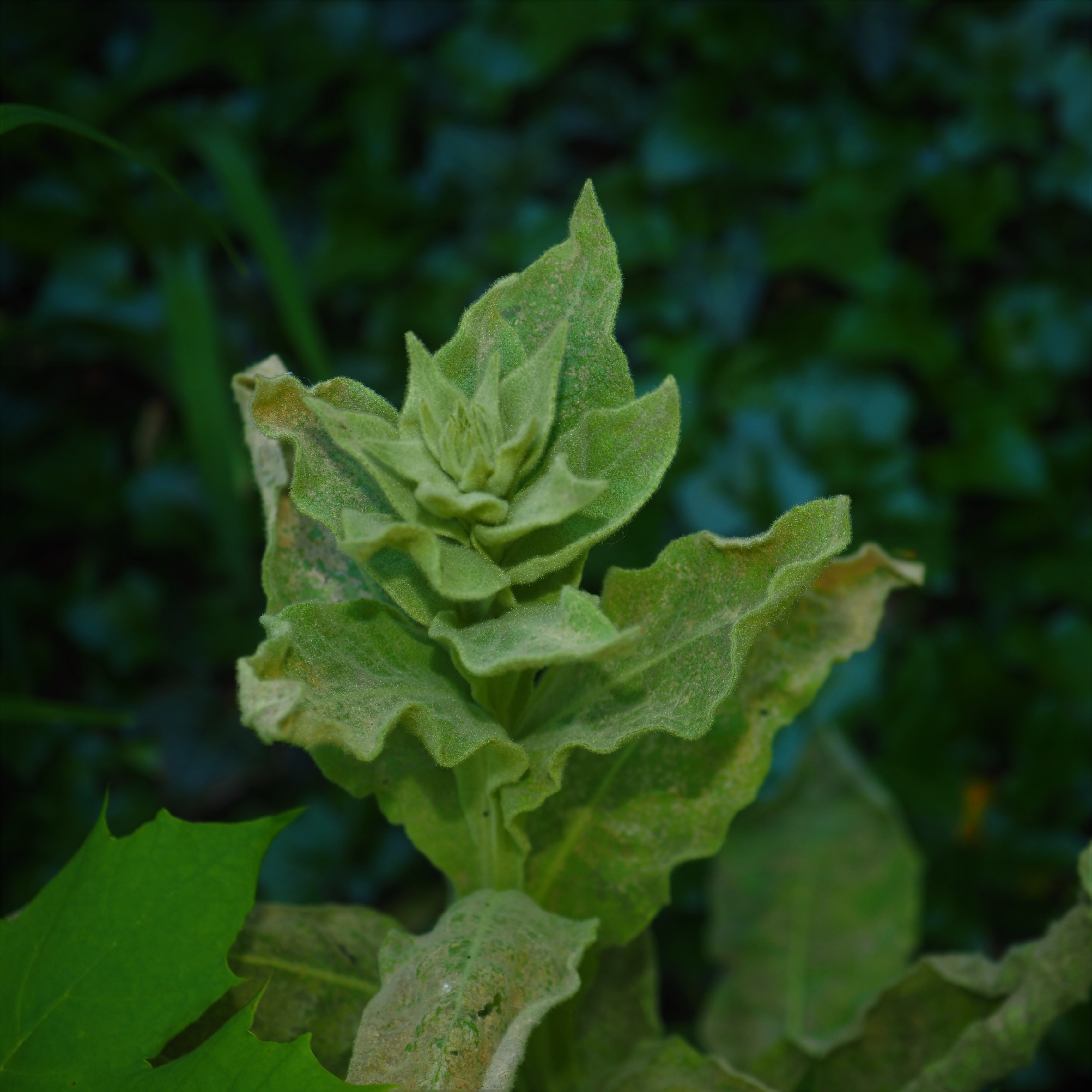

The Climbing Fumitory is really hooked on that pole now and looking for more places to attach to. The Spiderwort is also going crazy - but only before noon. Then its petals turn to protoplasm and seem to melt away. Look closely at picture 3 and you can almost sense the melting.


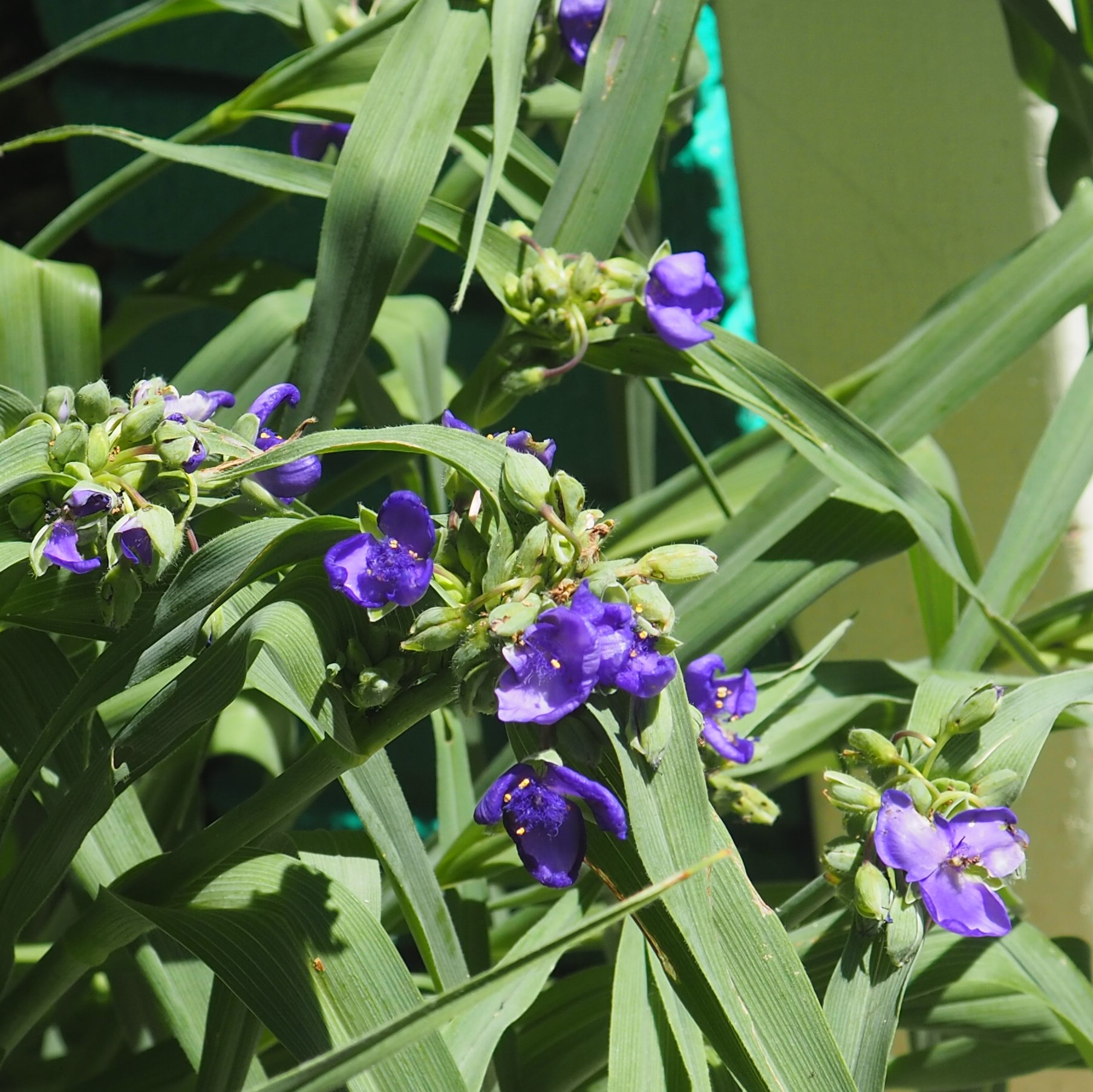
Here is the continuation of the Peony story. For years I've watched a Peony in the back yard fade until this year it only showed a few leaves, no buds. But the other day, while I was in the front yard talking to a friend, I spotted something bright pink - and it turned out to be a Peony bud. These first two are pictures from last week. In picture 3, we see a Mangora placida Spider in the flower, and picture 4 shows that beautiful Peony as it begins to fade out - Already!

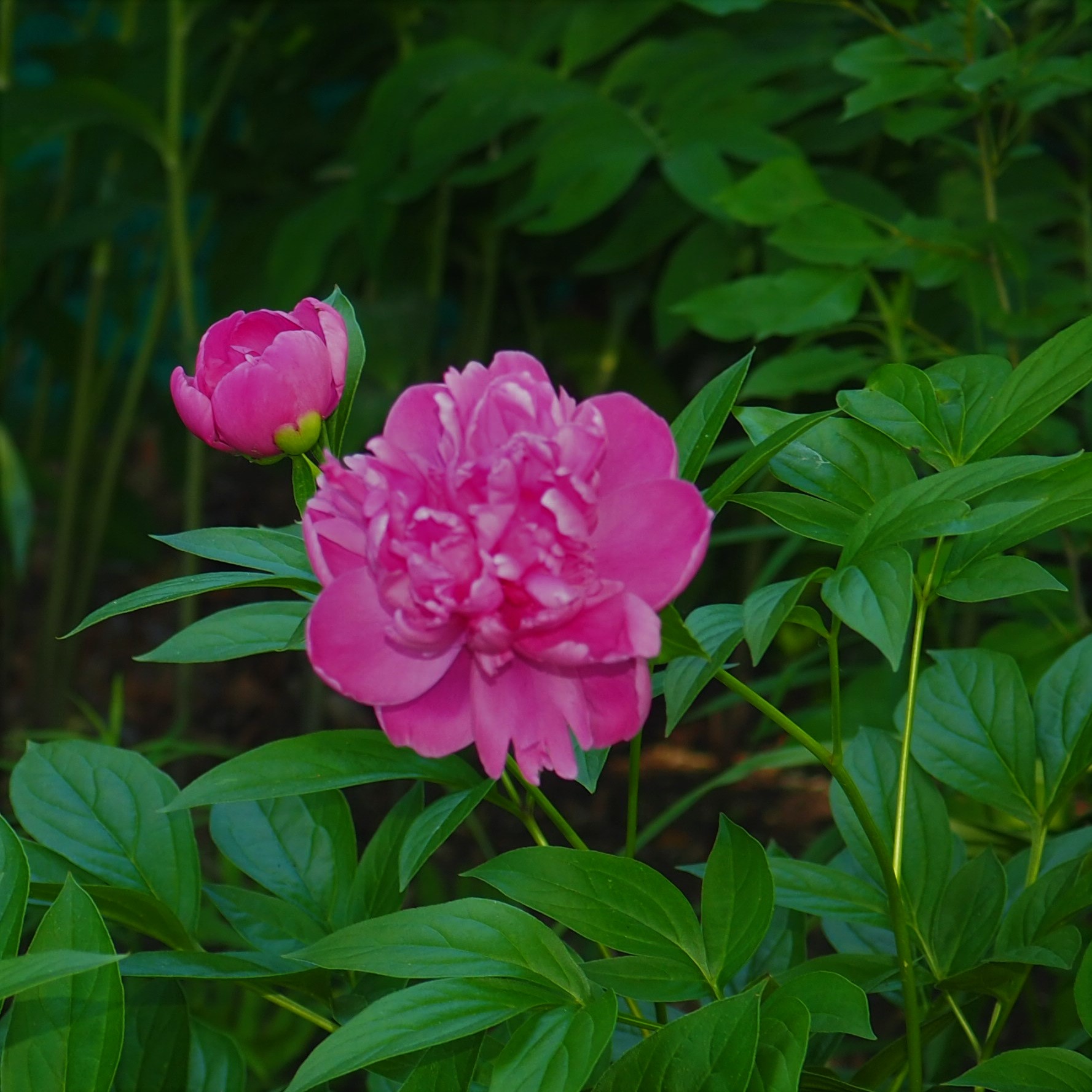

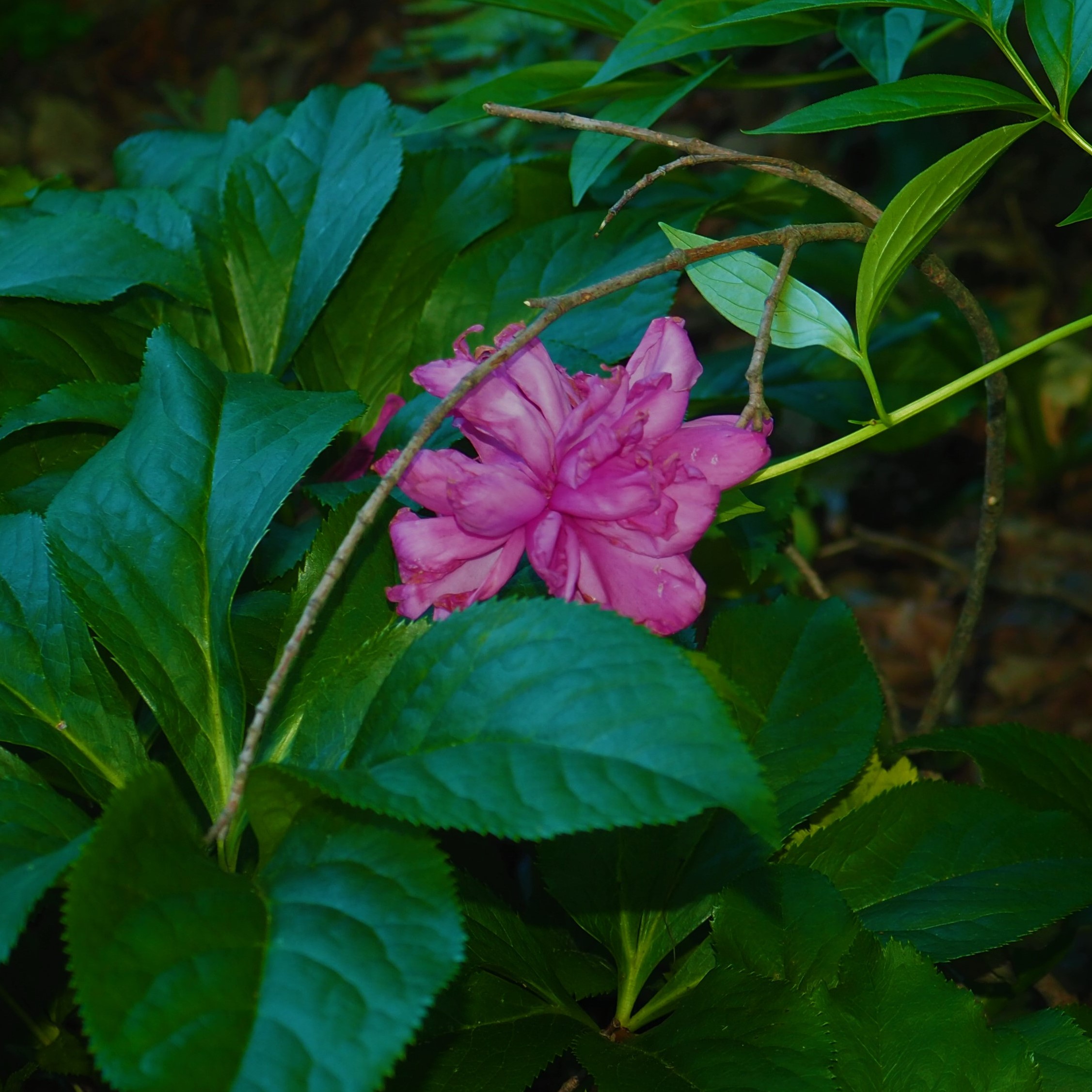
Now it's time to enjoy the best part of the Flower Walk - the Pond. Picture 1 was taken while that lovely Lily was flowering. In the meantime, I ordered a slightly better grade of Lily - it actually came with a few leaves showing it was still alive. Picture 2 shows the small leaves of the new plant, which is three or four feet below water. Picture 3 shows who are the REAL flowers of the Pond - the Fish! They really make the water glow!
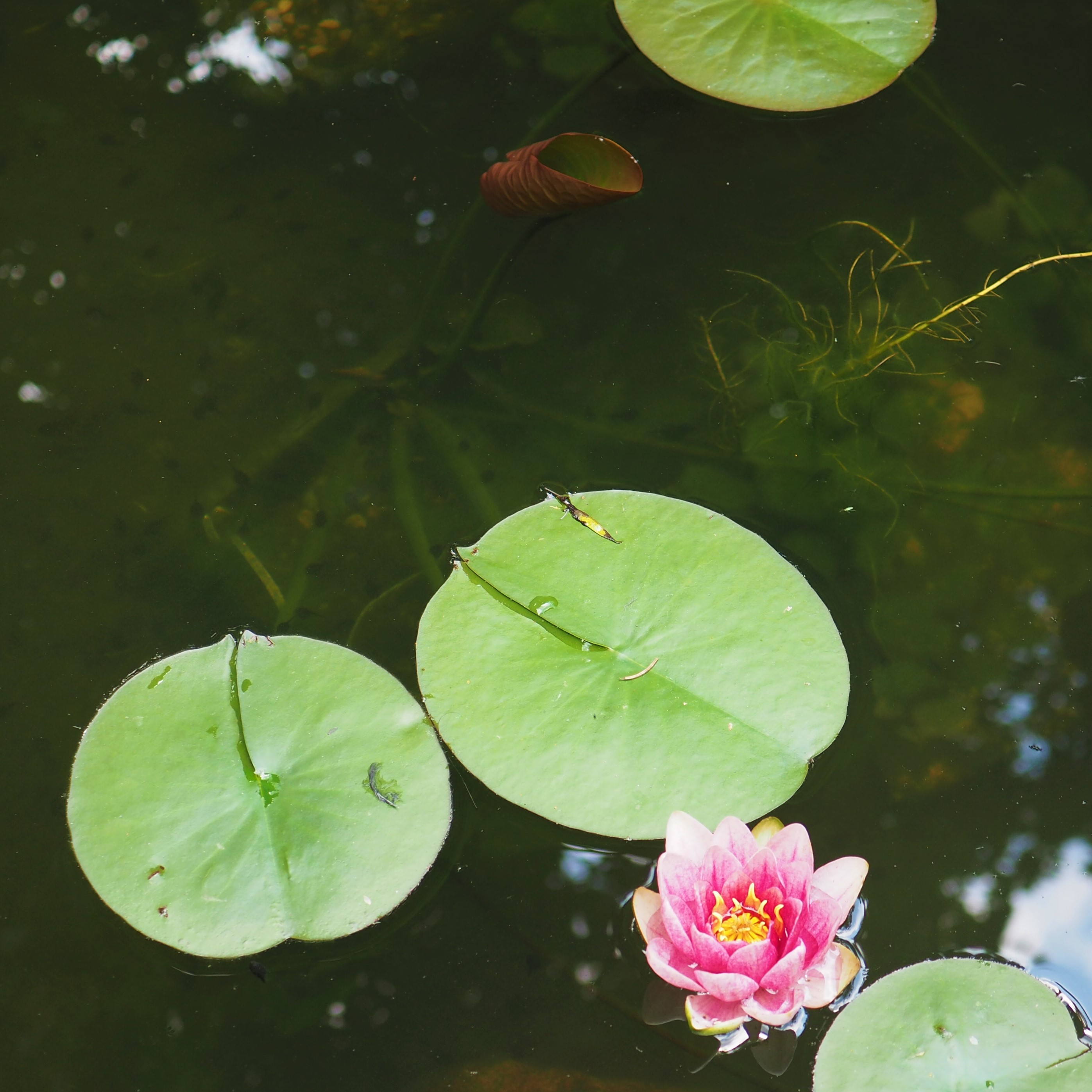

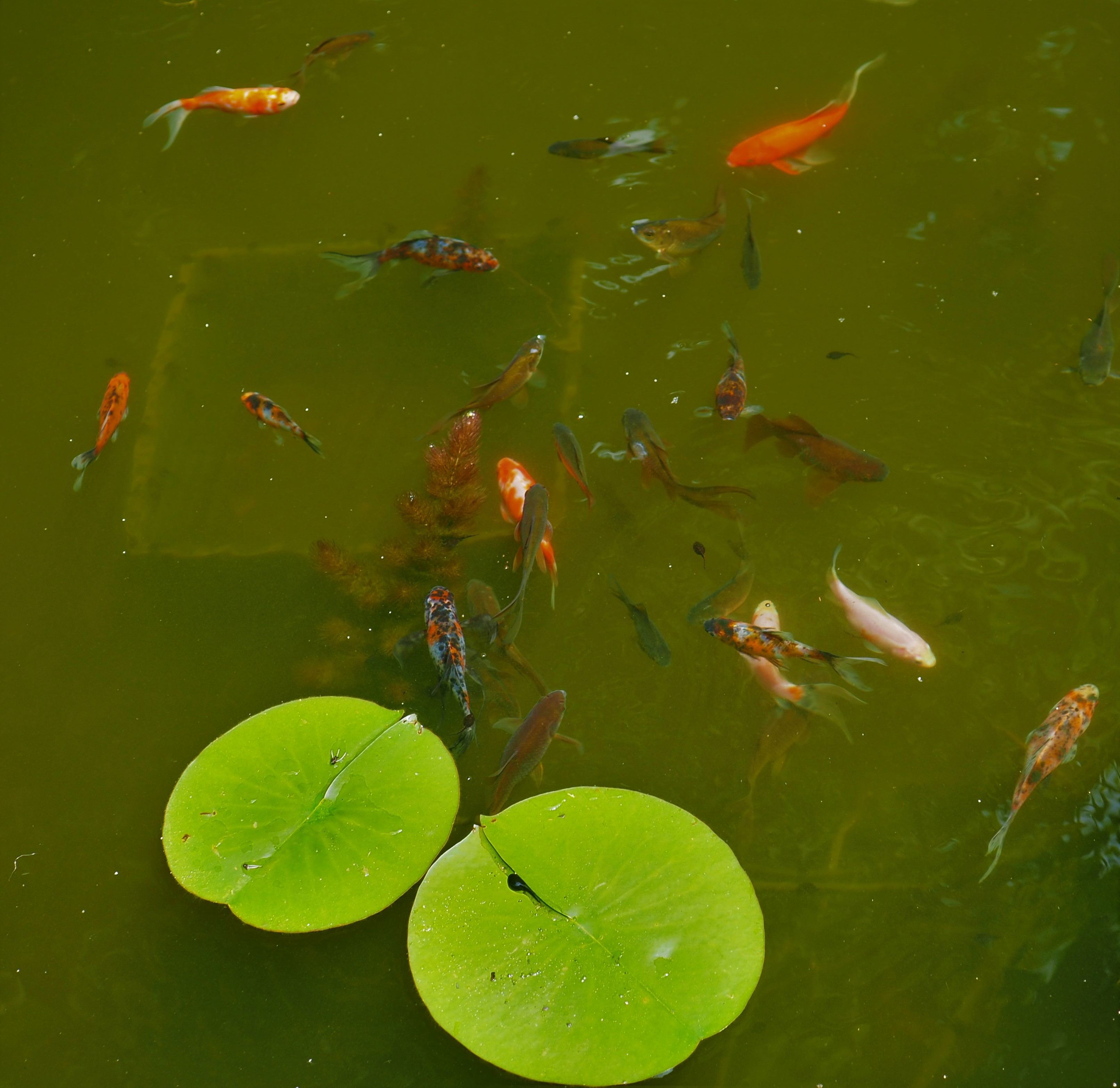
Let's look at our Spiders of the week. First, a Common House Spider with an unusual protuberance, which I hope isn't a Wasp larva. Then, that special Common House Spider male, with its gorgeous red color change. Next is a Cobweb Spider. The little black one in picture 4 is a new one to me.
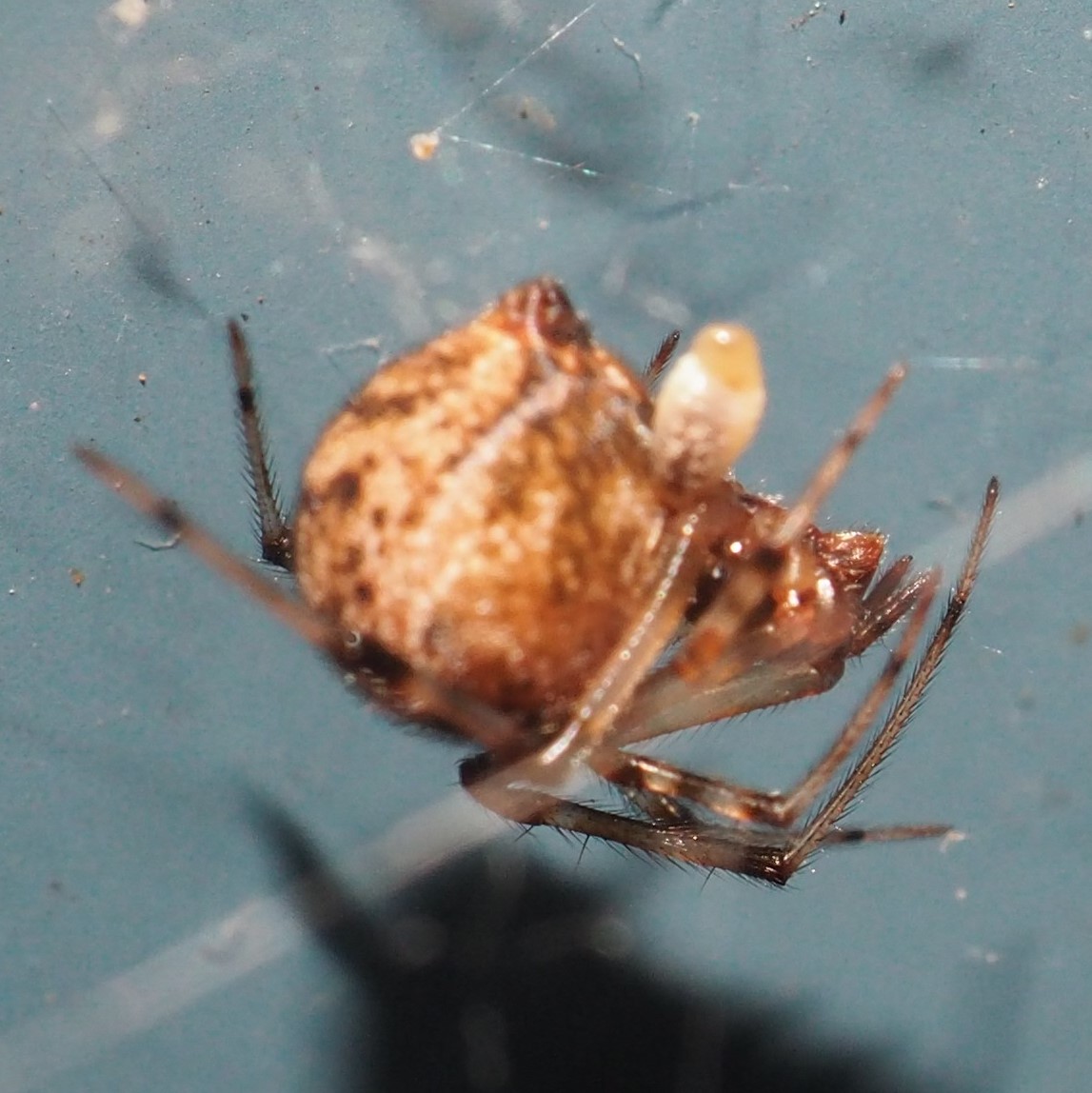
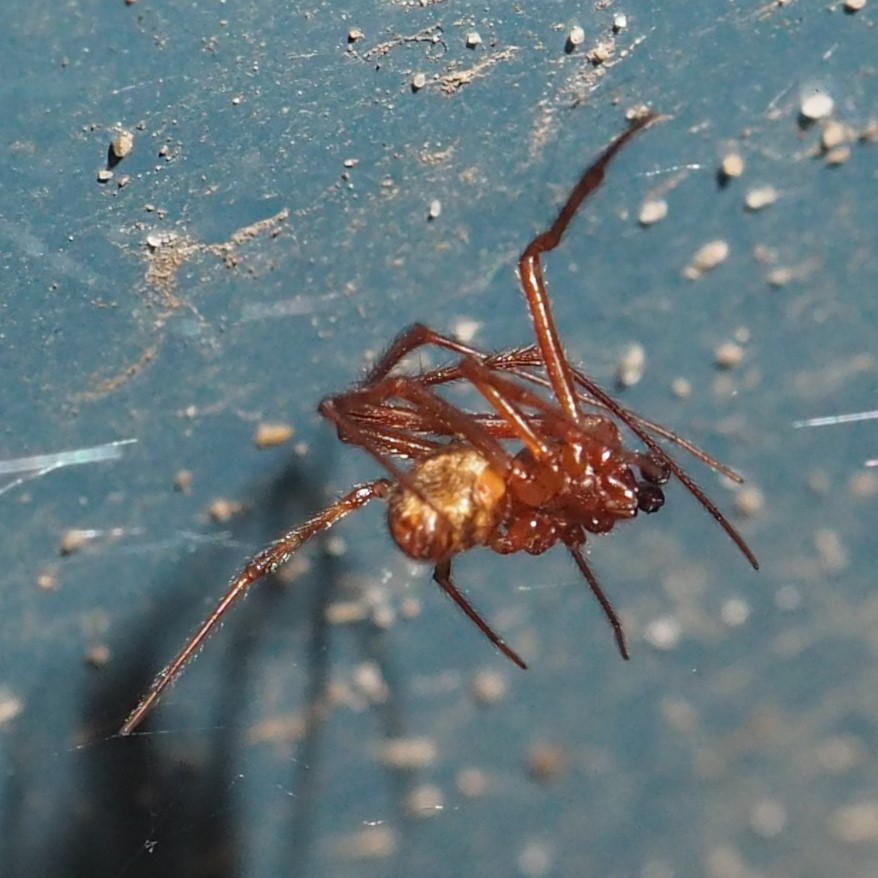


That Brotherly Ground Crab Spider that began showing up around here a few weeks ago is still active.
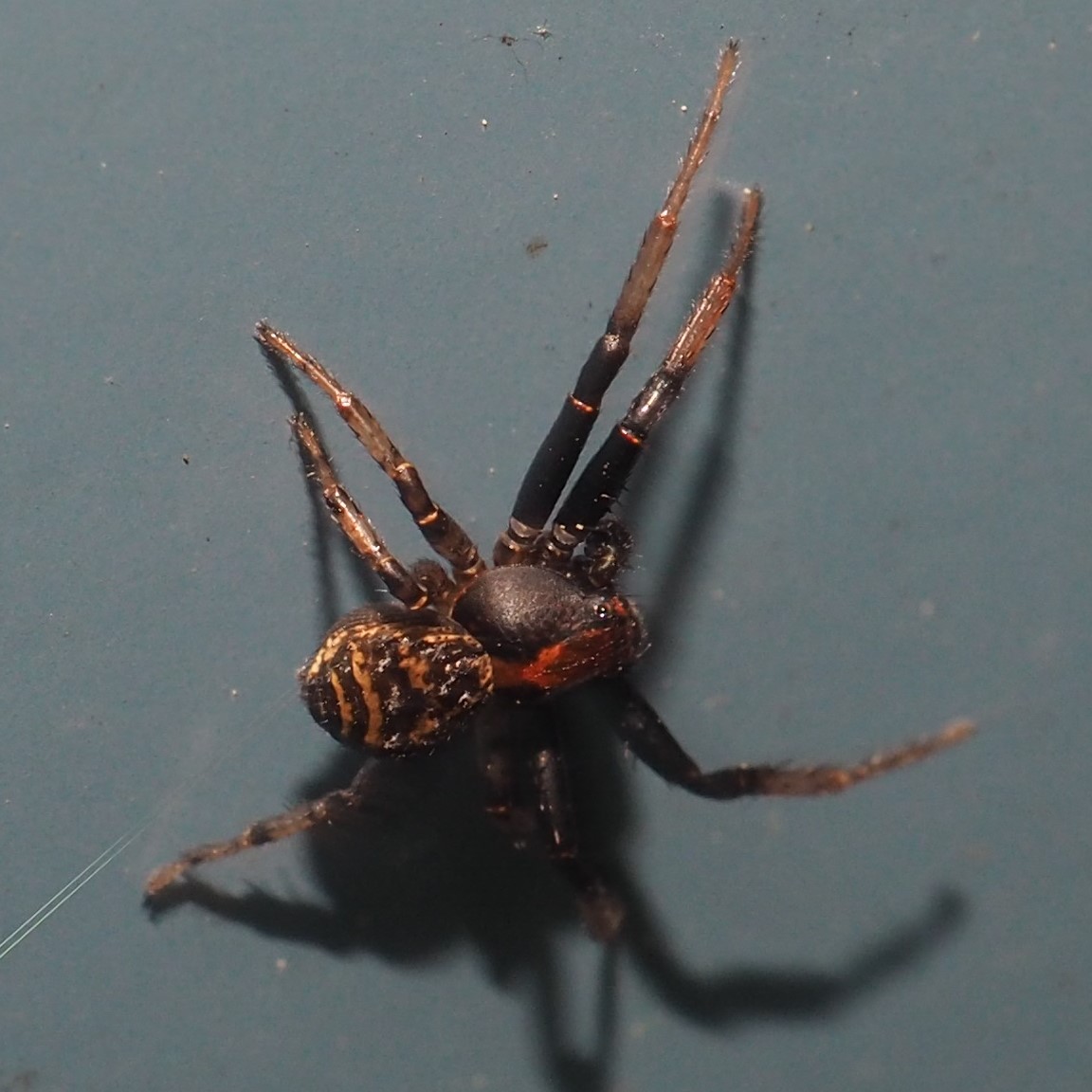
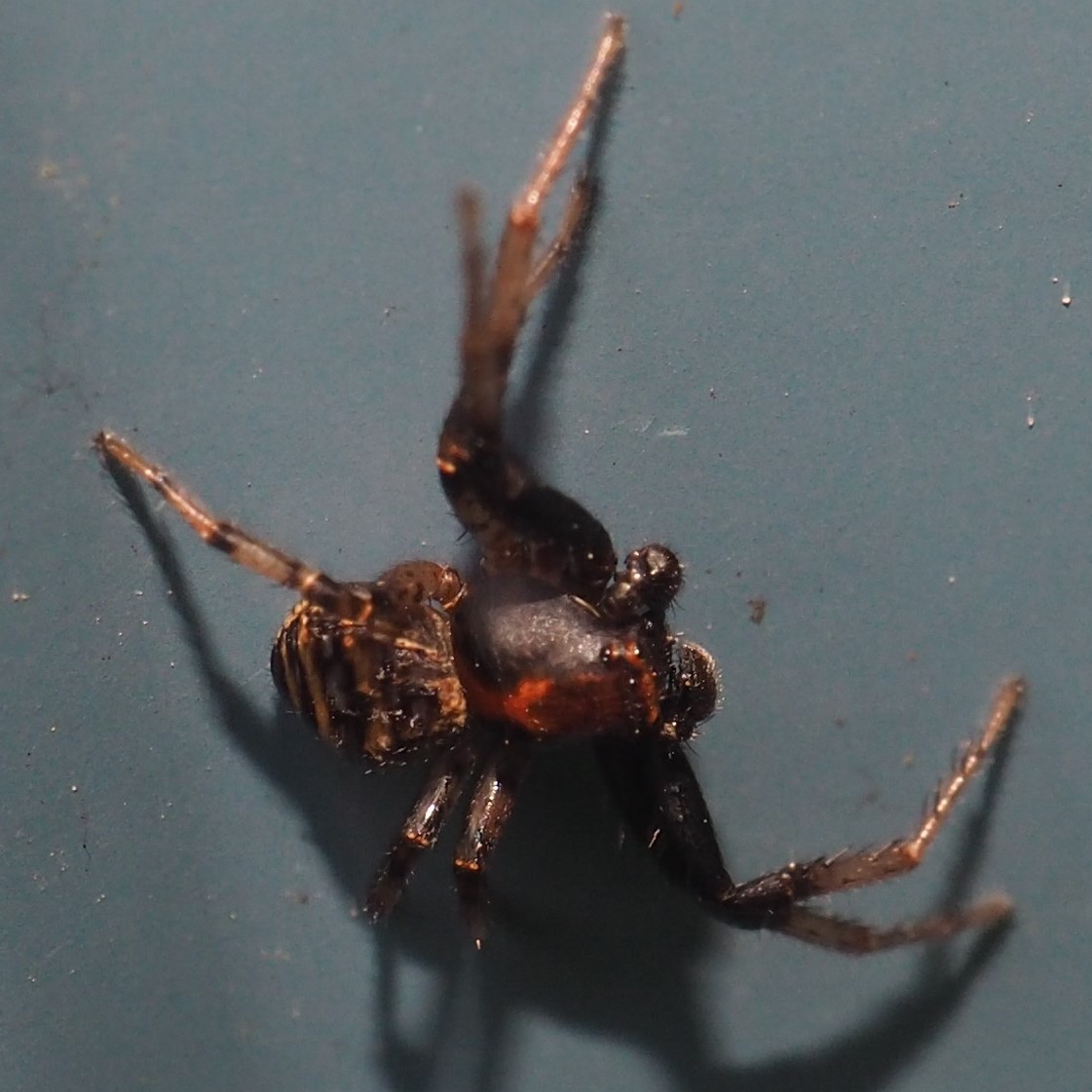
This first skinny spider may be a Cellar Spider. The other two look like the larger Crab Spiders, possibly Bassaniana.
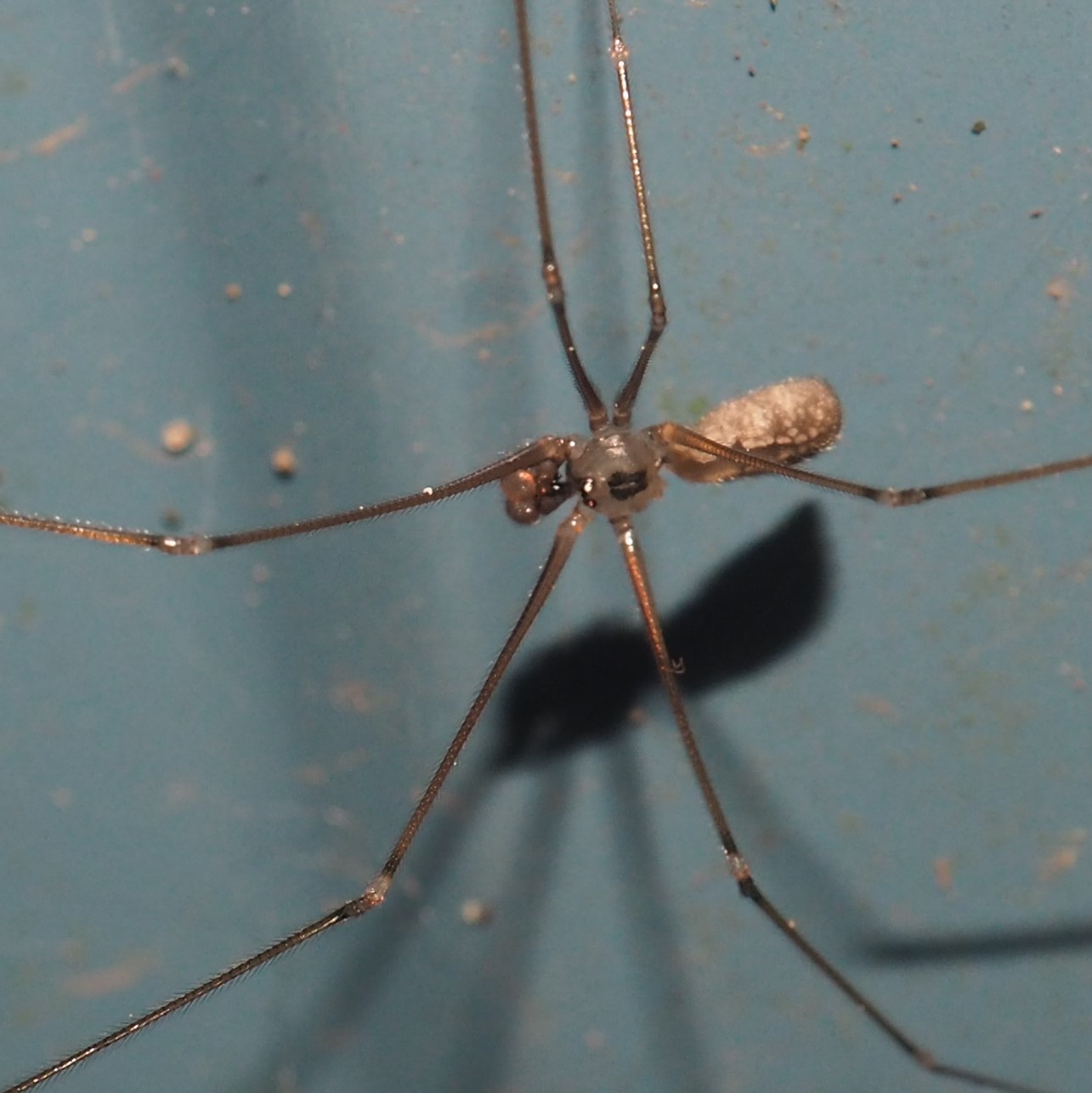
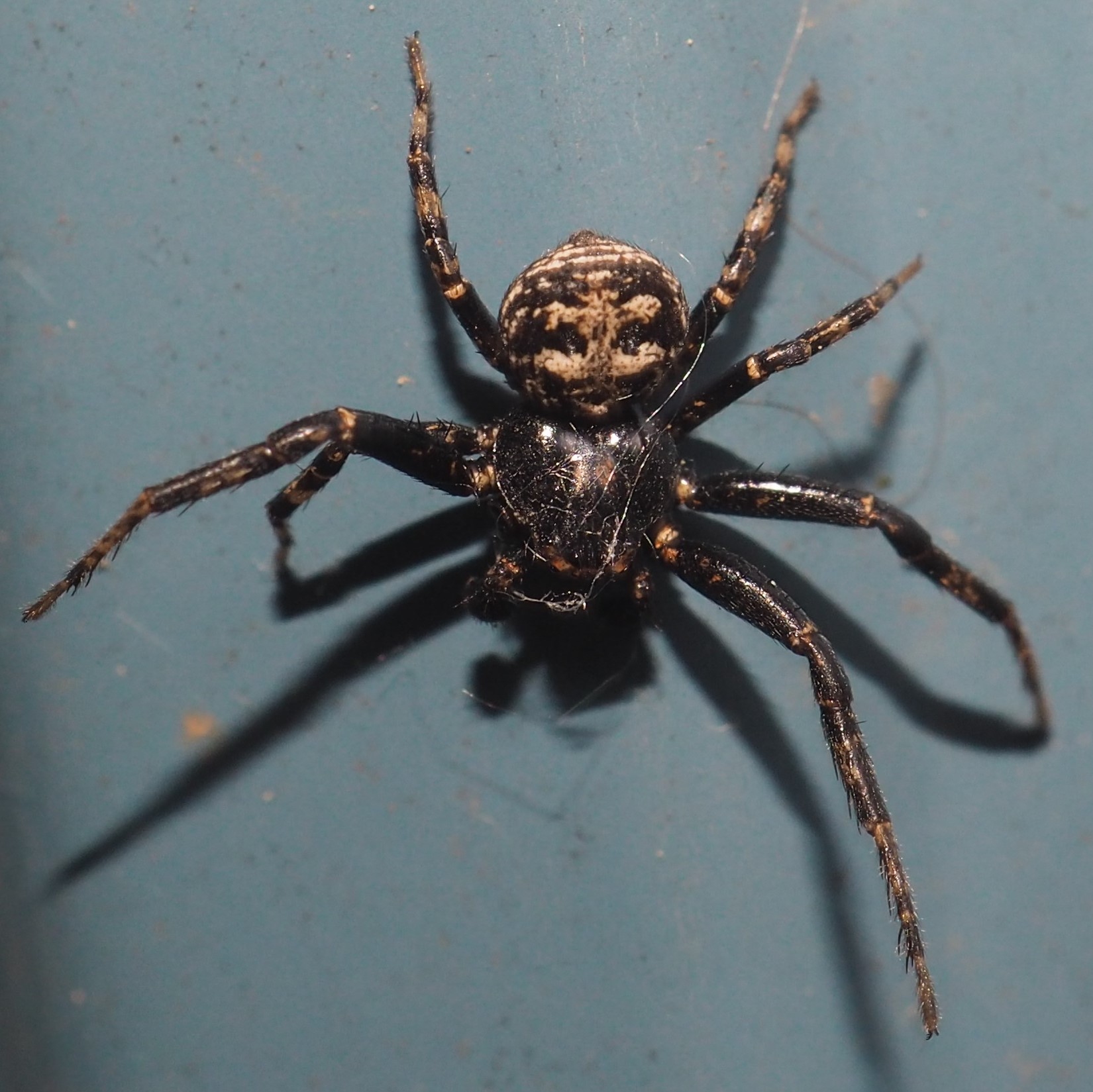
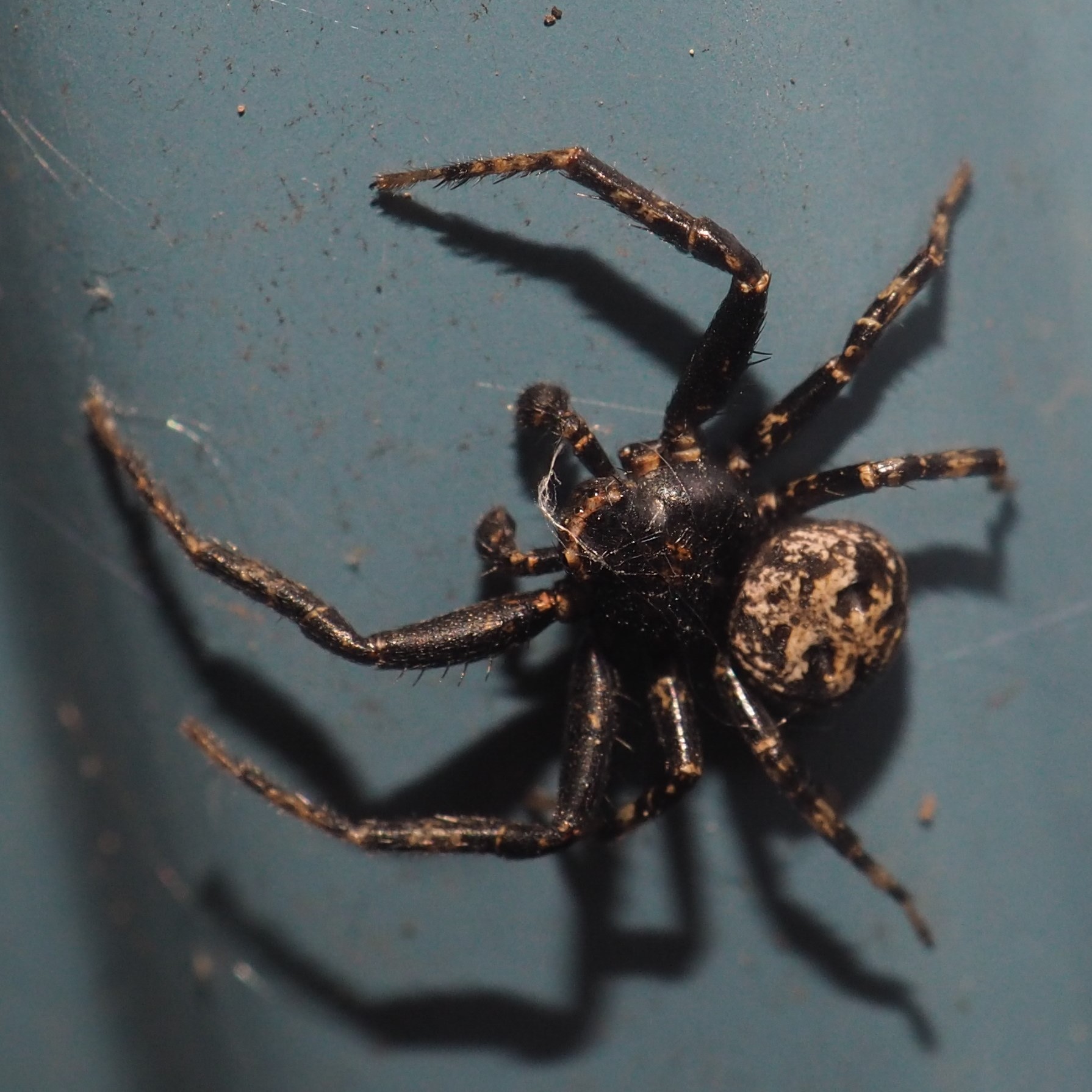
Three things appeared this week on the South Wall, and I think all of them are Spider egg masses. I'm pretty sure the last fluffy batch are from a Spider like Euryopis funebris.
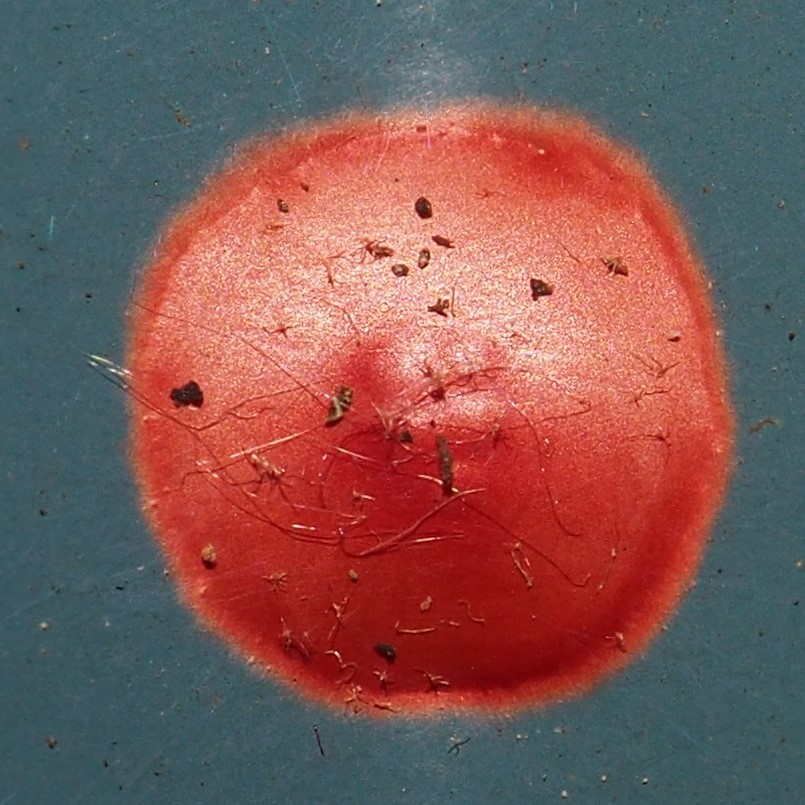
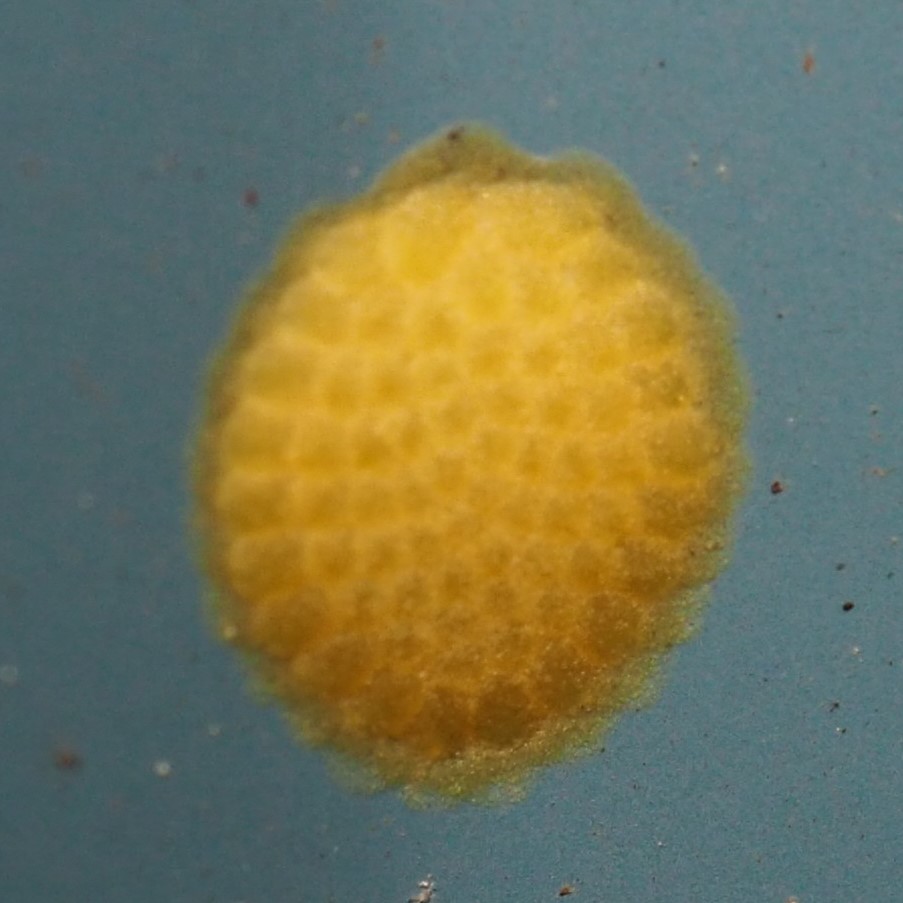
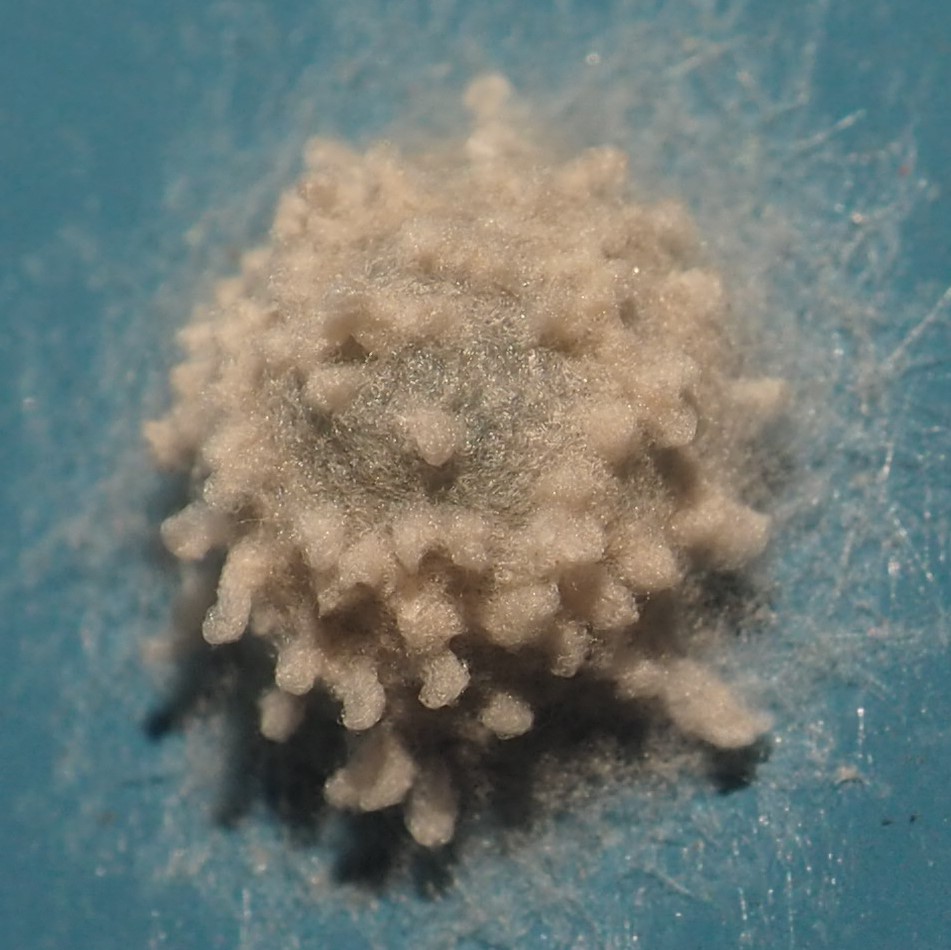
Just a couple more Spiders. I think this first one is Naphrys pulex, my favorite Jumping Spider. It is probably still a juvenile. Next is Mangora placida, with its angry-looking "eyes". Third is a beautiful new little Spider that I just saw this morning for the first time.
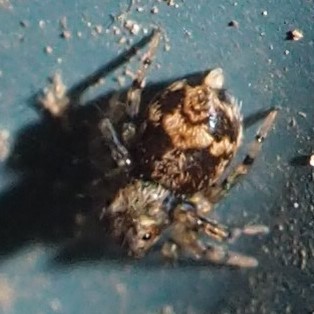
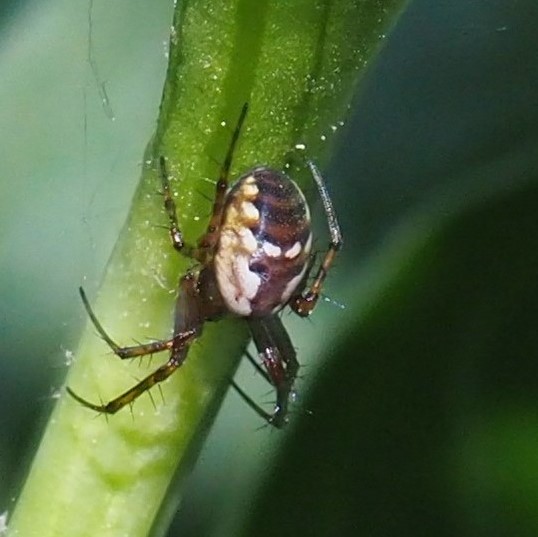

Not Spiders, but probably the closest thing I have to Spiders, are the Mites. This beautiful red one is probably a Whirly-gig Mite, since right after I shot this picture, a Mite started doing the Whirly-gig Dance, and I'm pretty sure there was only one Mite in the vicinity. The last picture shows a Wasp larva completely enveloping what looks like a many times smaller Spider. That was it for the Wasps this week.
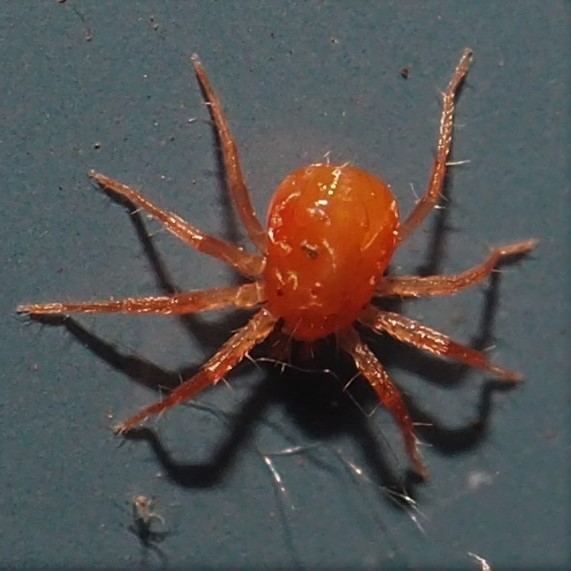
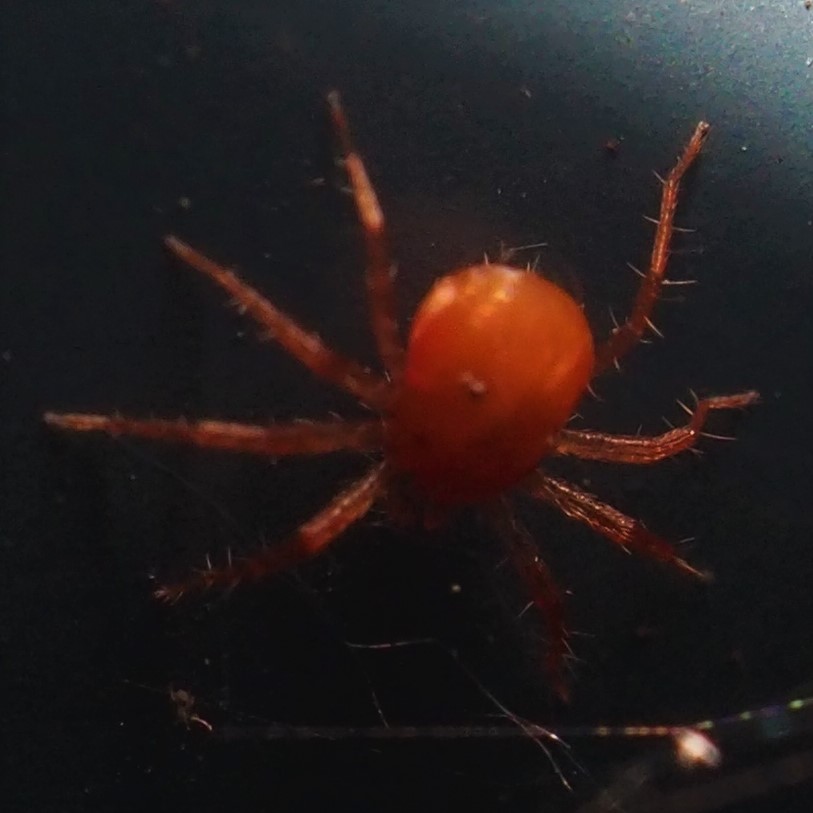
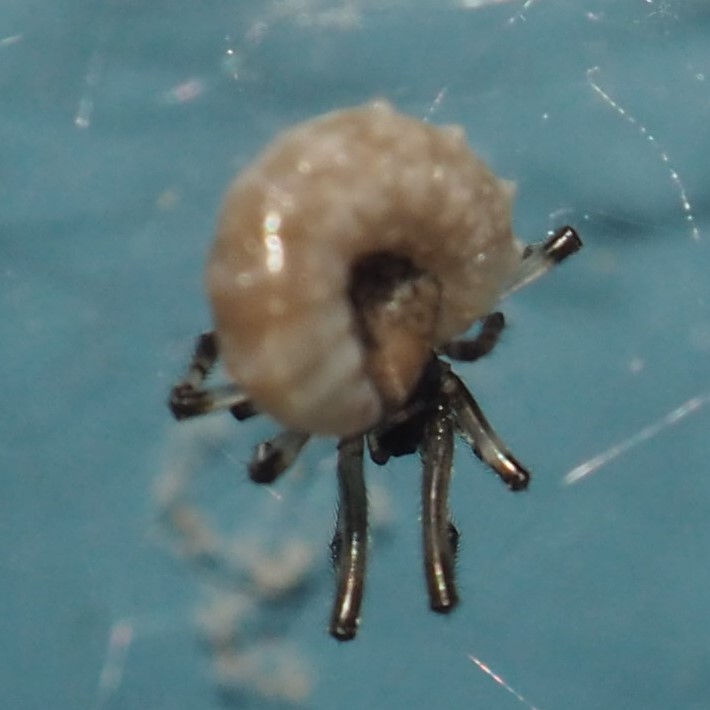
Let's return to the Pond. Here are two shots of the two Frogs sitting so close you can just make out which one is the bigger. It does seem that at any time the smaller one (the one who chatted so excitedly in the June 5th Blog) is capable of initiating a conversation, making something that sounds a bit like clearing one's throat. This is more pronounced if I am talking with Chaim. Froggy three might suddenly put his oar in, as if to acknowledge another male presence. There's never a dull moment at this Pond.
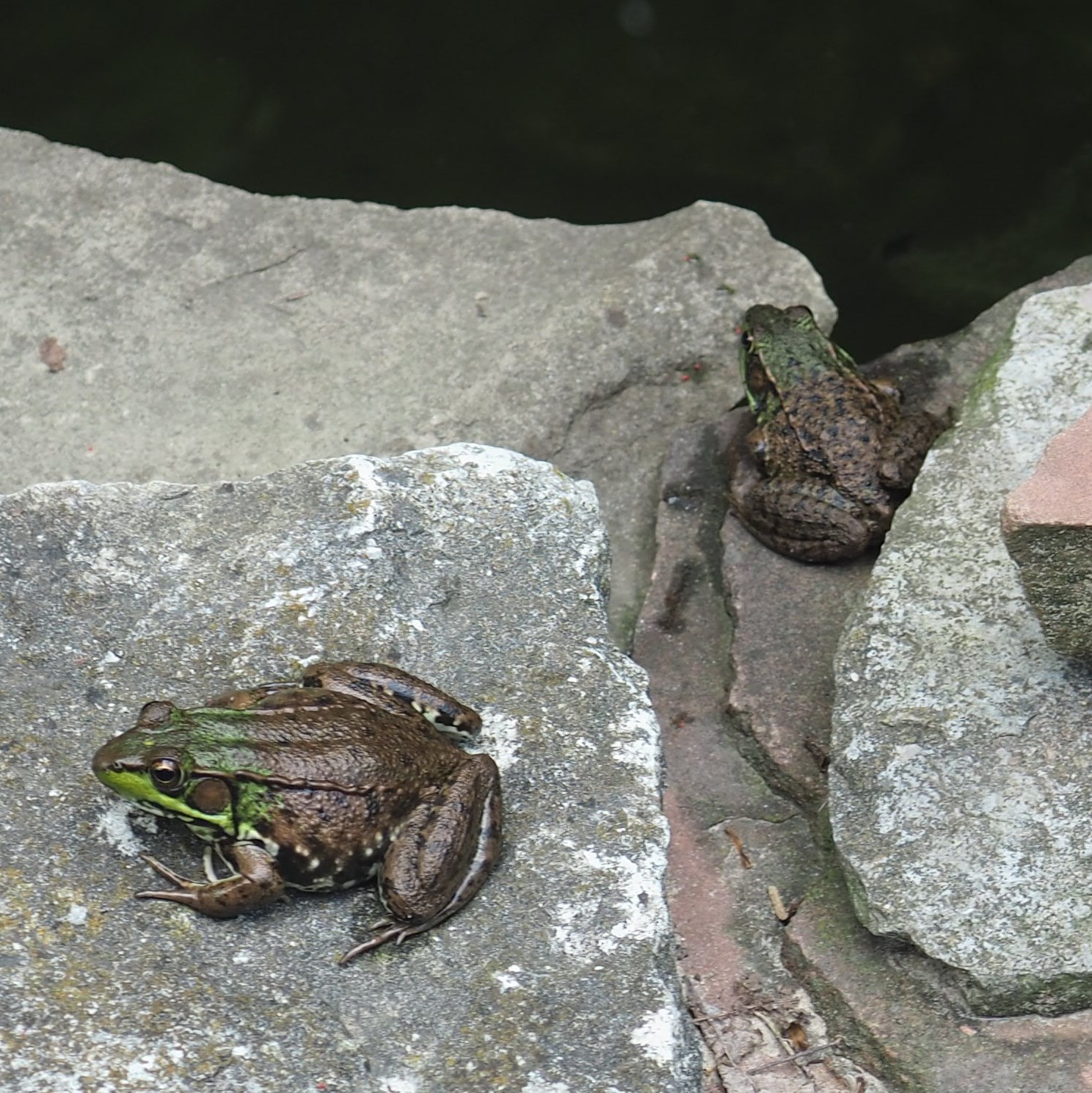
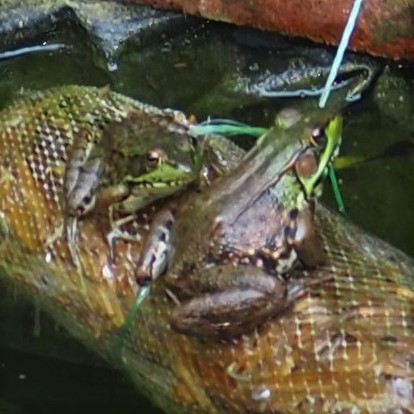
Thanks again for visiting. I hope everyone is doing things you want to be doing, with friends or family (or both). The older I get, the more I care about these simple things and relish the pastimes that don't depend on youth to be able to enjoy them. I'm lucky to live in a neighborhood with caring neighbors, but if I want to go back into the wild kingdom, there are the other neighbors, and you know who THEY are.
Love, Martha
Here is the pond early in the morning with the sun shining in gradually and illuminating the fishes as they continue their mating game.

Back to June 12, 2022
Forward to June 26, 2022
Back to main menu
copyright Martha O'Kennon 2022



















































































